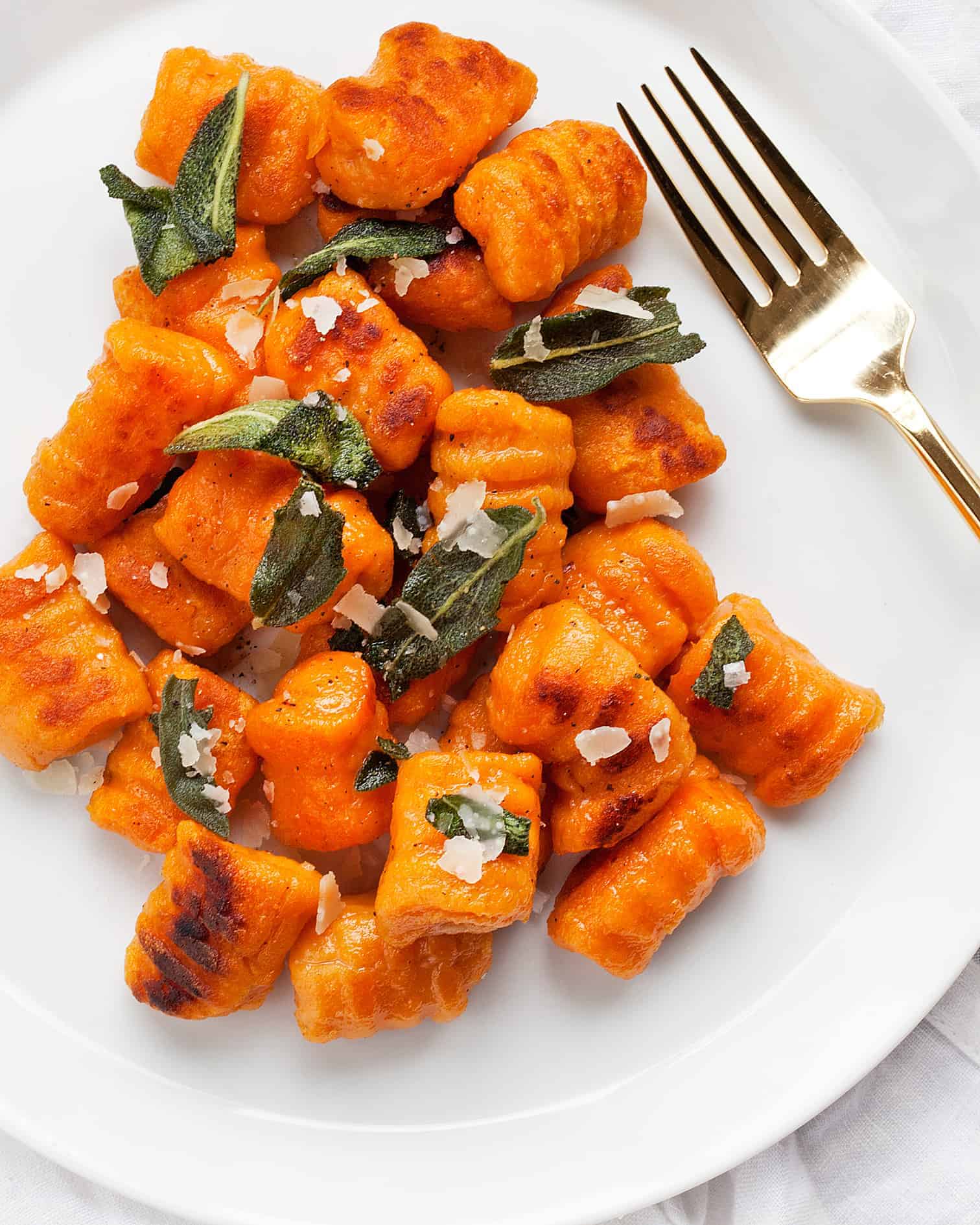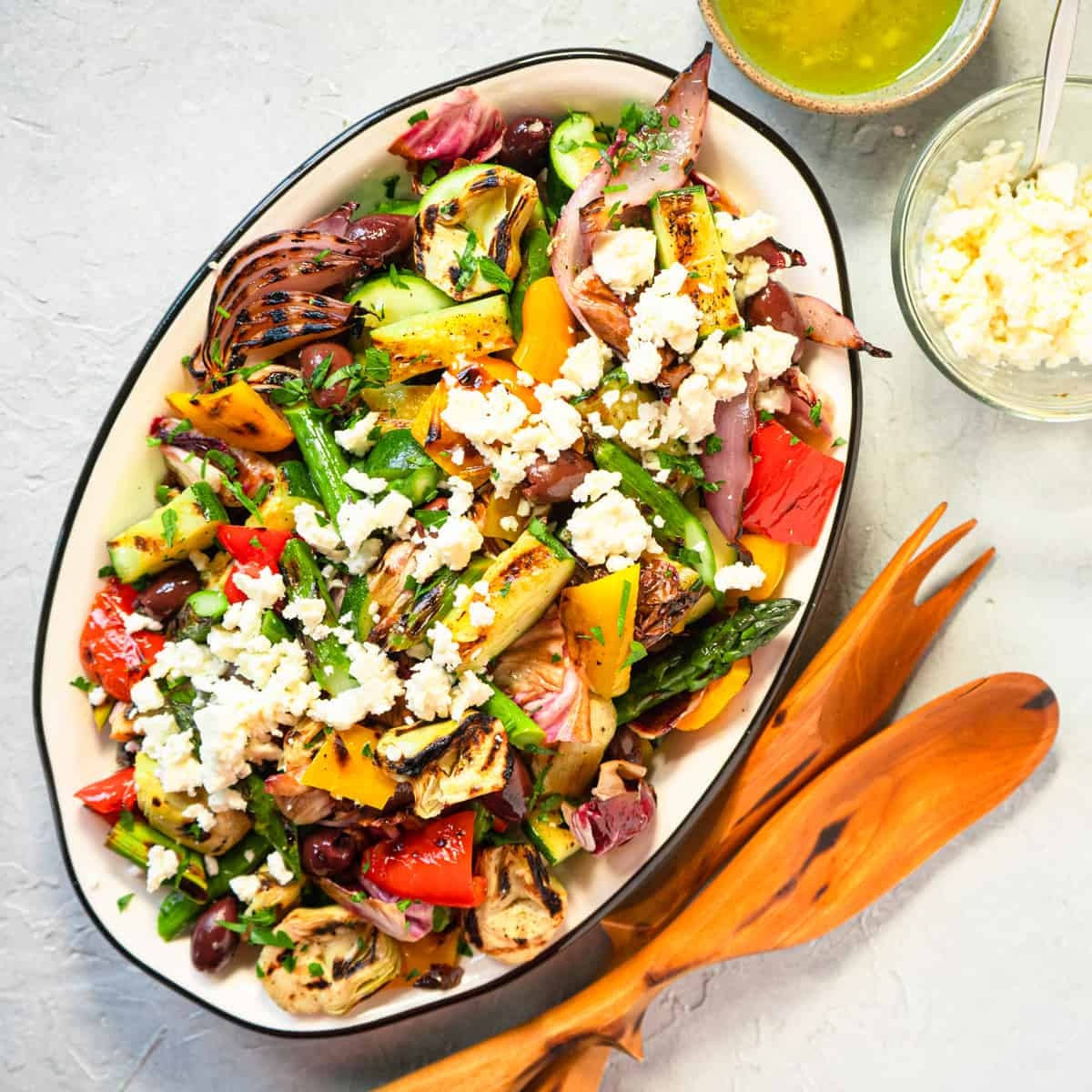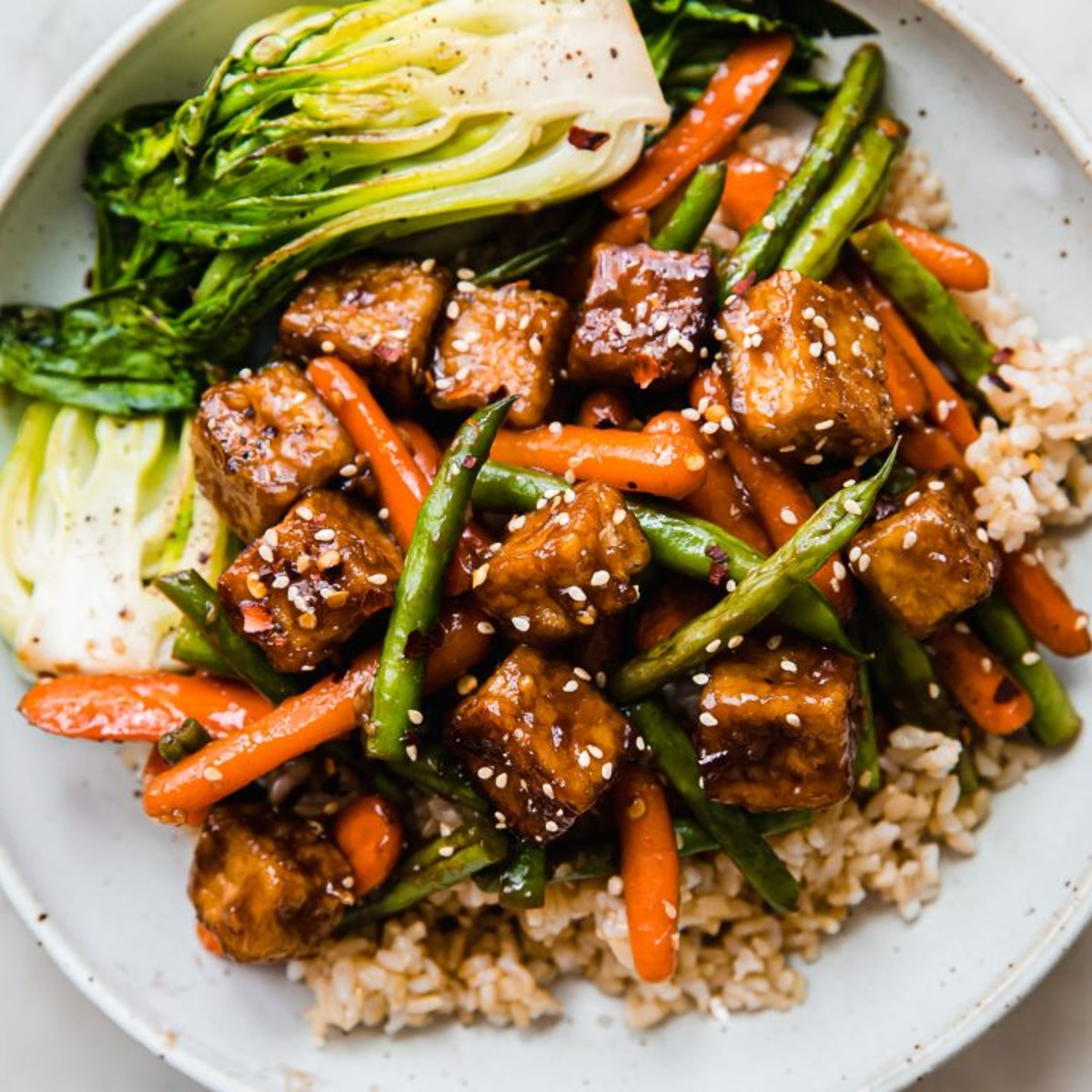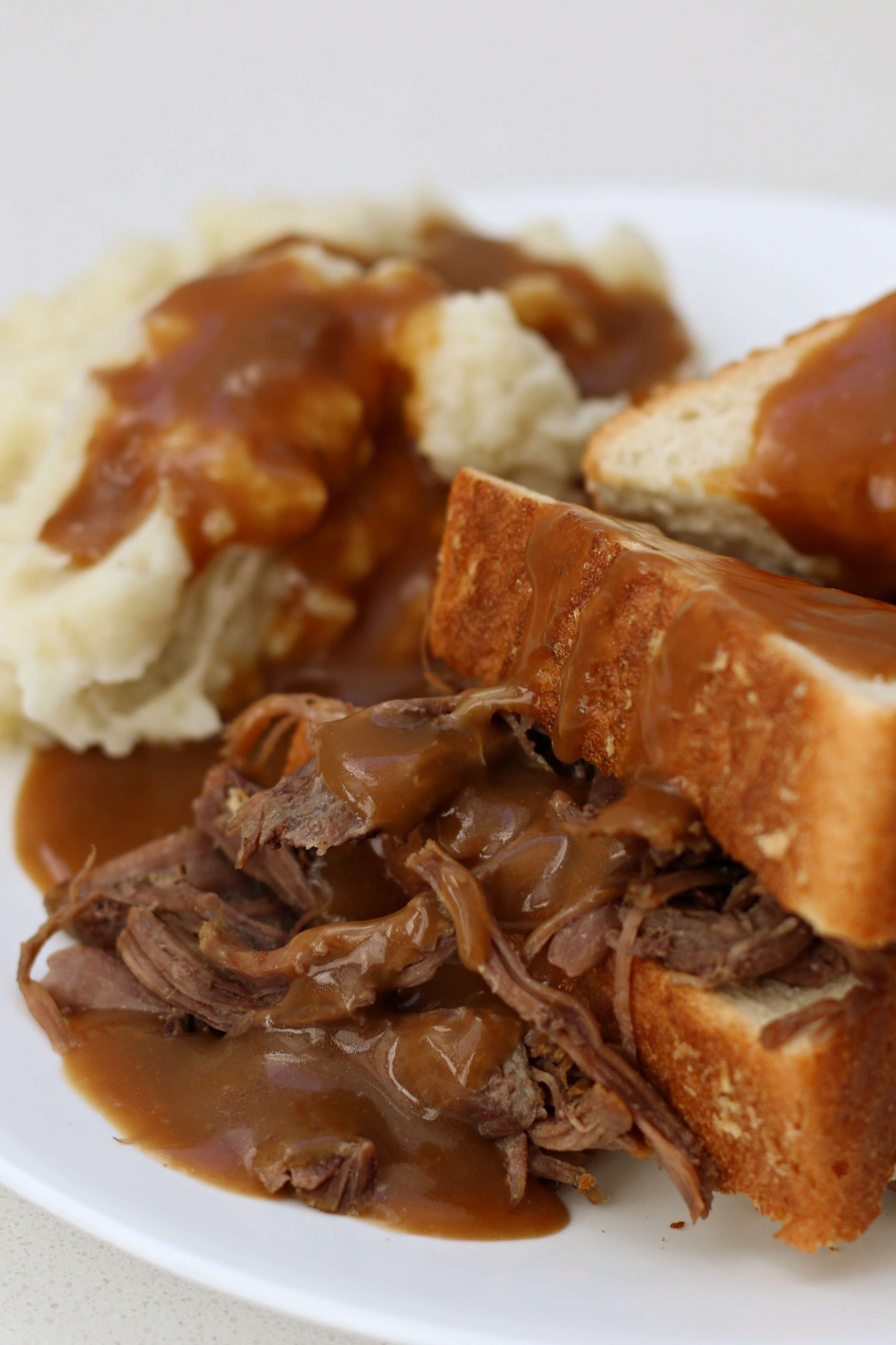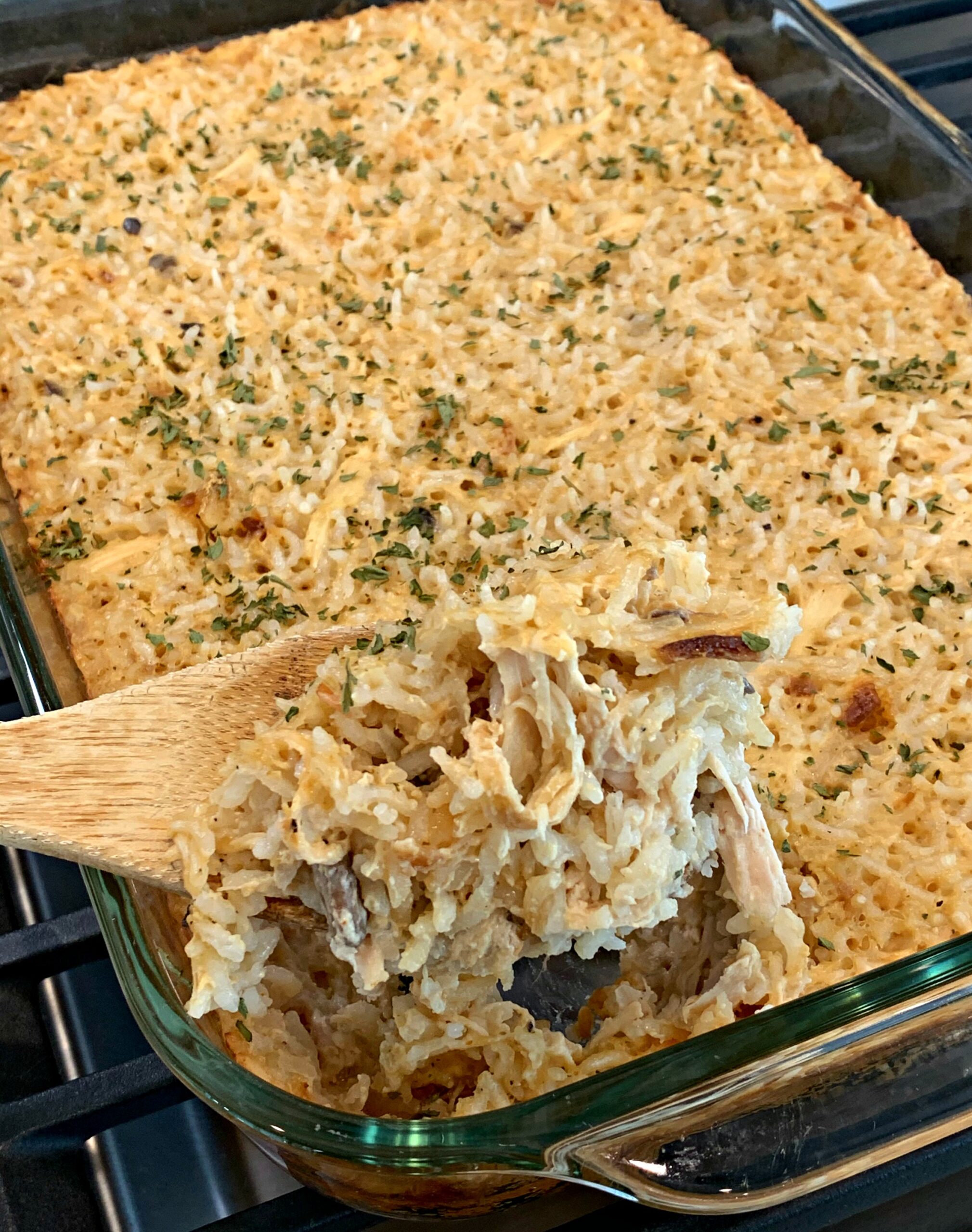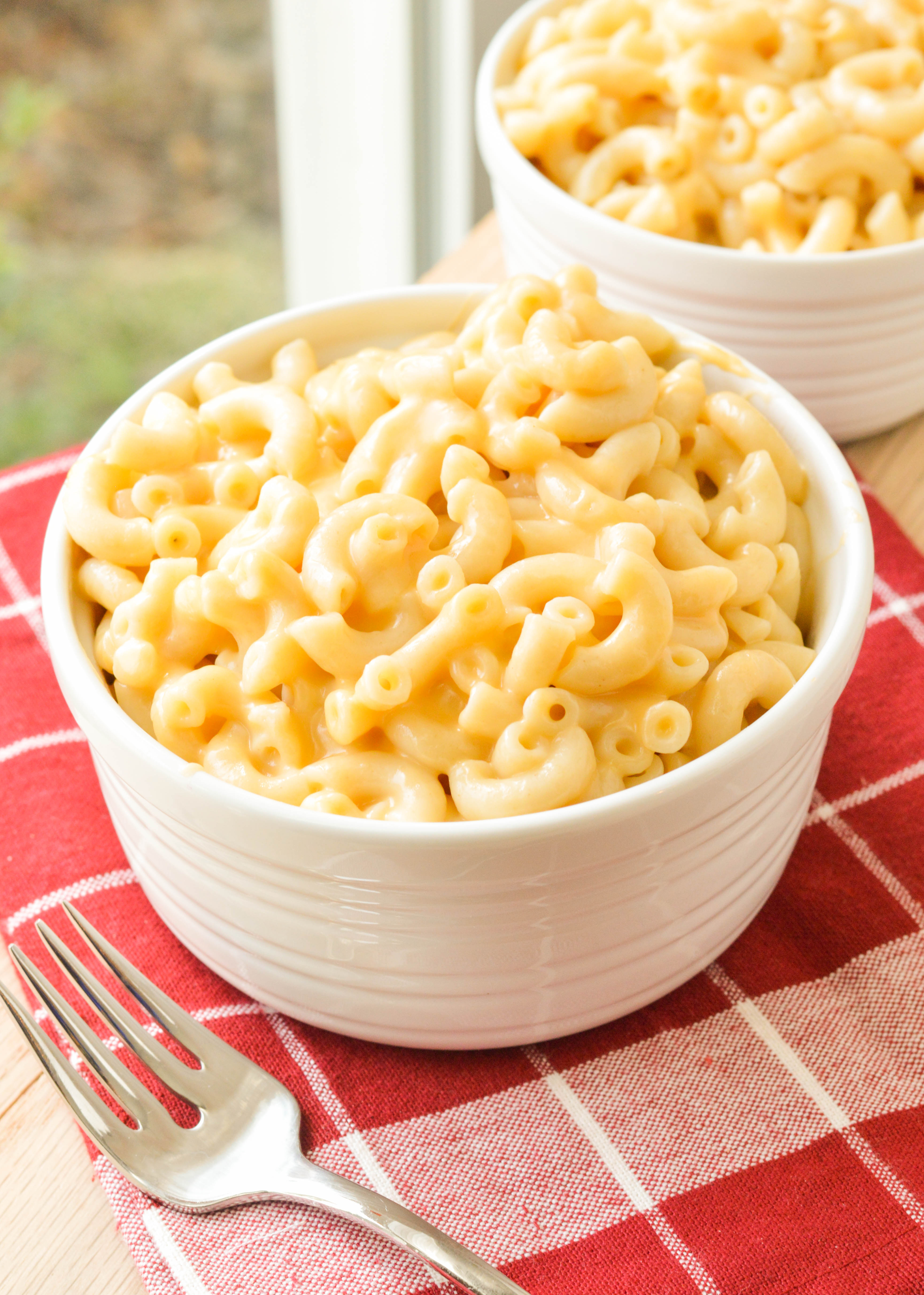 (1).png)
Global Grub: Signature Dishes from 20 Distinct Food Countries
Food is at the heart of every culture and brings people together across boundaries. The diverse cuisines around the world tell unique stories through their specialty ingredients, cooking techniques, and traditions passed down through generations. In this article, we will journey through 20 leading culinary nations that showcase the incredible diversity and excellence found in global cuisine.
Through sharing dishes from cultures worldwide, we aim to broaden our understanding of different food traditions and spark curiosity about regional cuisines. By journeying across countries through their most iconic recipes, our taste buds and minds can travel as far as our palates. Bon appetit and welcome to a culinary world tour!
- France
French cuisine has long centered around balanced sauces and fresh baked goods that have influenced cultures globally. Classic French sauces such as béchamel, hollandaise, and béarnaise are pillars of the cuisine, often serving as bases for dishes. At the heart of French cooking is elevating ordinary ingredients to extraordinary heights through mastery of technique.
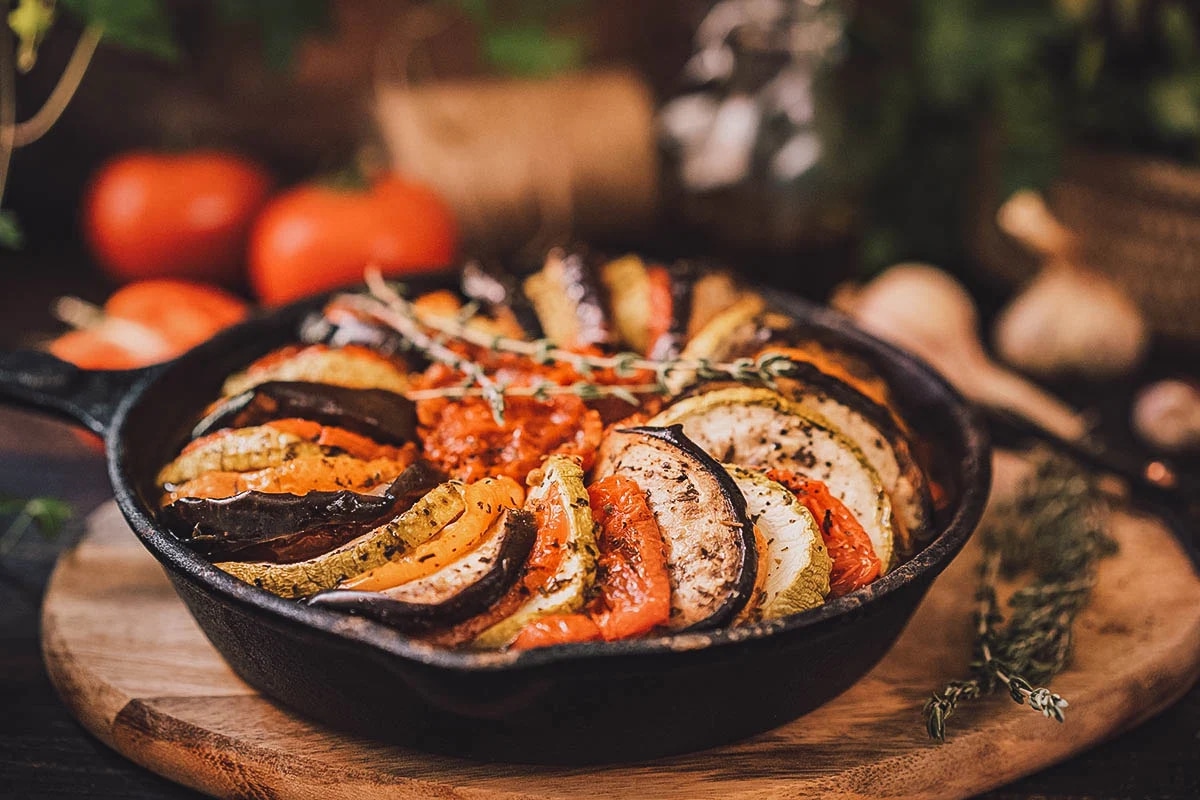
Especially, butter is the quintessential French ingredient, bringing richness and creaminess to everything from vegetables to pastries. No French meal is complete without an array of breads like the iconic baguette, achieving its hollow crunchy texture from meticulous folding of the dough.
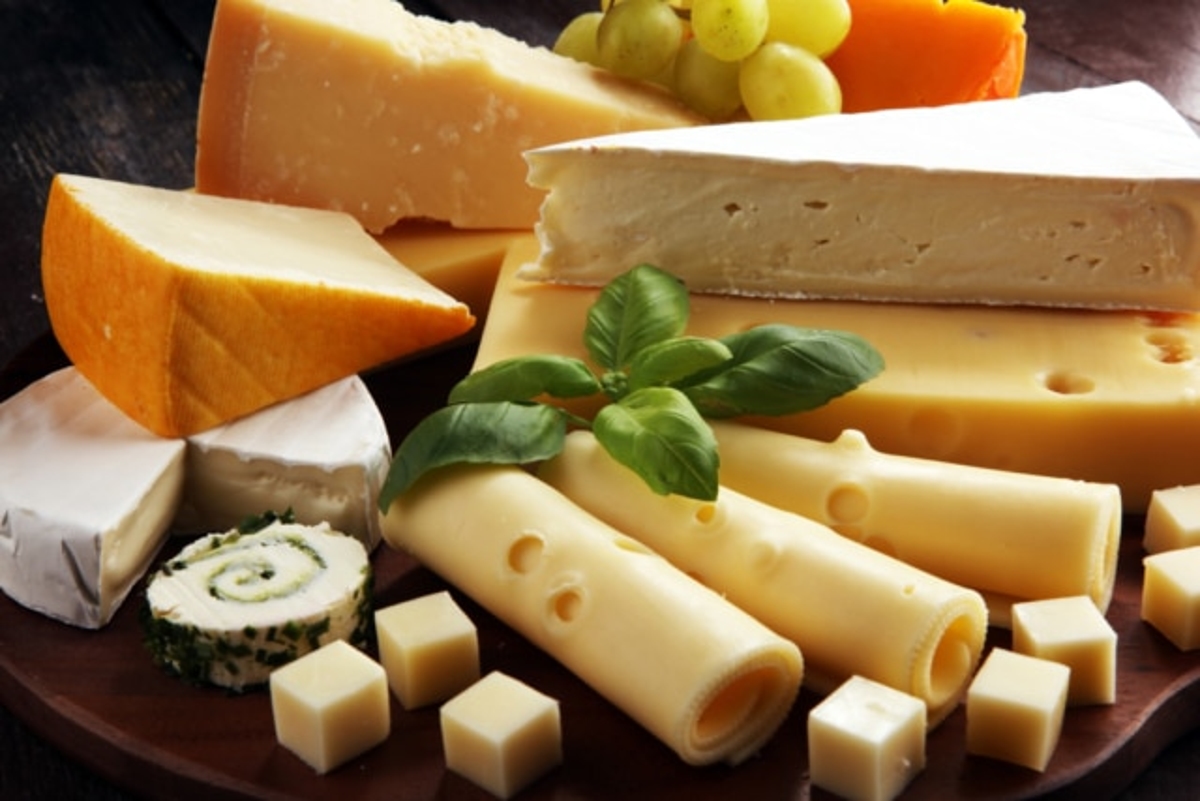
Recipe: Coq au Vin
Among the countless regional specialties across France, Coq au Vin represents the poultry dishes that are celebrated everywhere. Hailing from the Burgundy region, this braised chicken stew has been a classic French recipe for generations. It simmers tender pieces of chicken in a blend of local red wine, aromatic mushrooms, smoky bacon or pancetta, and pearl onions.
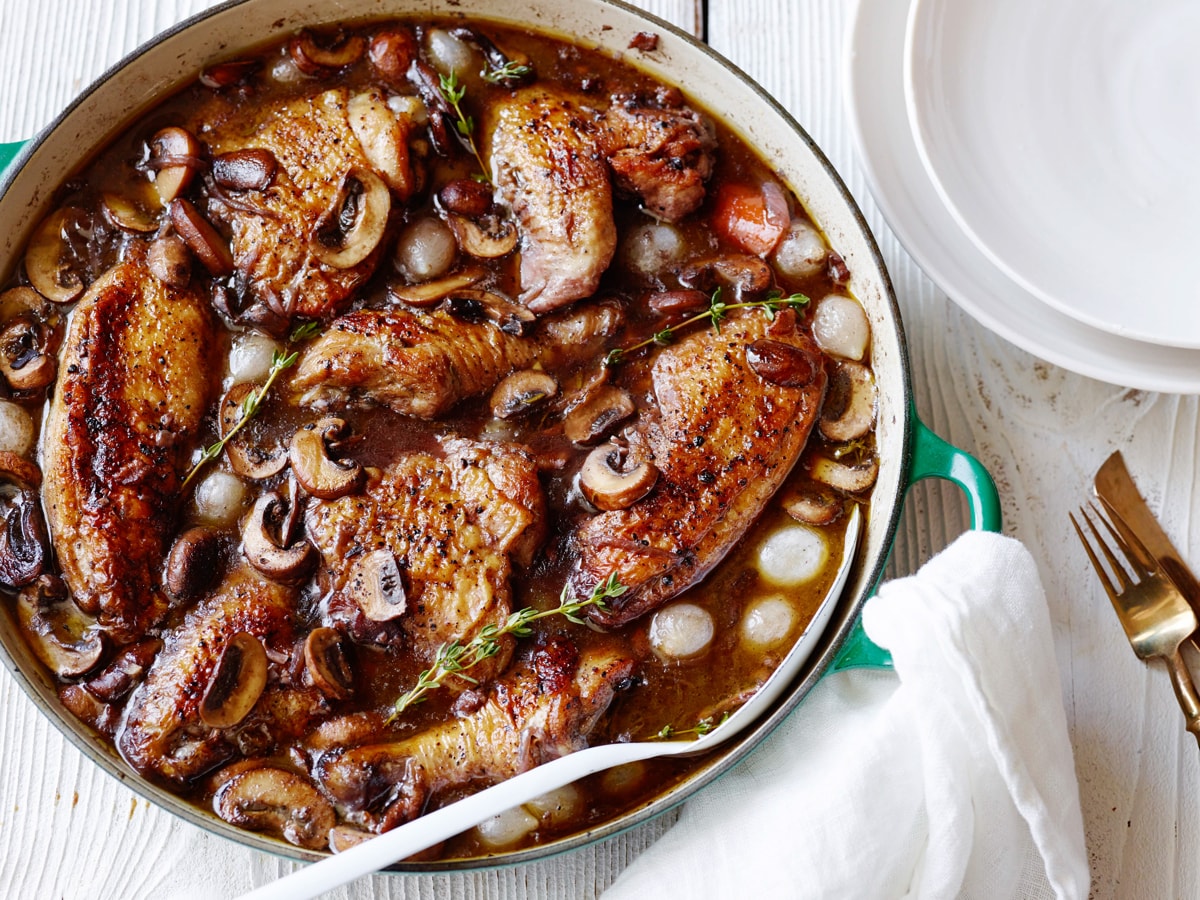
Together, the ingredients marry into a succulent and intensely flavored blend. Coq au Vin allows for flexibility in ingredients yet provides a template of technique that showcases the French approach to letting flavors meld together harmoniously over a slow cook.
Ingredients
- 1 whole chicken, cut into pieces
- 150g bacon or pancetta, diced
- 250ml red wine
- 1 onion, diced
- 2 carrots, diced
- 3 cloves garlic, minced
- 150g mushrooms, quartered
- 10 pearl onions
- 1 tbsp butter
- Fresh parsley, chopped
Instructions
- Brown chicken pieces in butter then remove and set aside.
- Sauté bacon/pancetta until crispy, then add onions, carrots and garlic. Cook for 5 minutes.
- Add wine, chicken pieces, mushrooms, and pearl onions.
- Simmer for 1 hour, until chicken is very tender.
- Serve over rice or mashed potatoes, garnished with parsley.
Signature Ingredient: Butter adds signature richness and flavor to many French dishes.
- Italy
With its diverse regions each putting their spin on ingredients, Italian cuisine is a story of vibrant colors, medicinal herbs, and cooking techniques passed down through generations. Tomatoes, native to the Americas but widely cultivated in Italy since the 16th century, have become synonymous with Italian dishes and act as a gateway to explore the country's culinary identity.
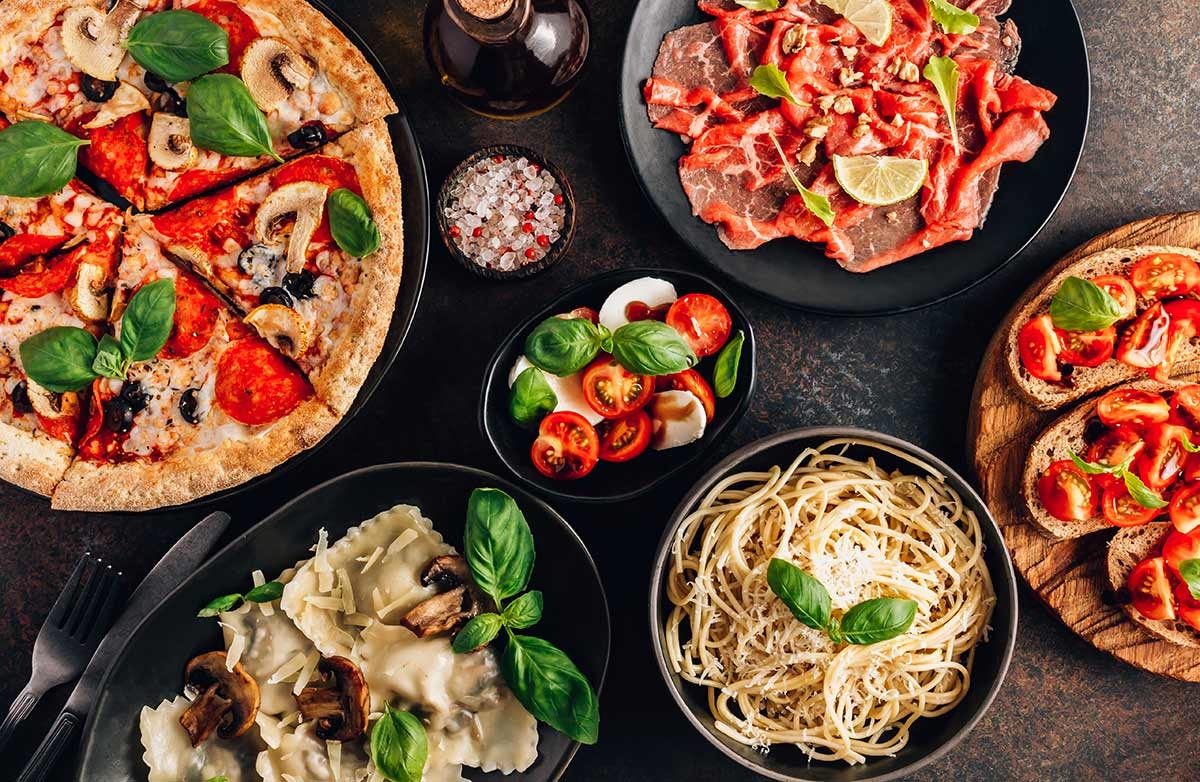
Olive oil, integral to Mediterranean diets, functions not just for cooking but as a condiment and moisturizer. Quality extra virgin olive oil displays grassy or peppery notes depending on the pressing method and varietal.
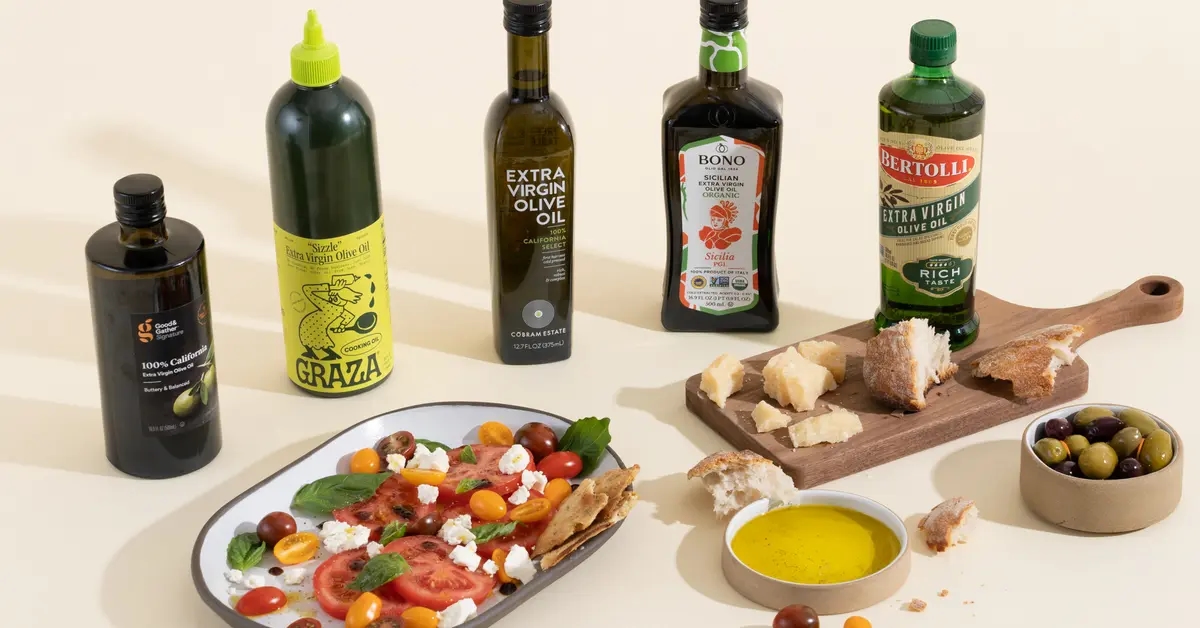
Another staple is pasta, which evolved as inexpensive sustenance but grew to stimulate the senses through endless combinations. Pizza, in its original focaccia form, has continued enhancing meals for over two millennia.

Recipe: Risotto alla Milanese
Hailing from Lombardy, Risotto alla Milanese exemplifies Italy's rice-based specialties. Employing short-grain Arborio rice, its preparation requires patience as frequent stirring releases starch to create a creamy texture. Traditional recipes call for saffron mingling with bone marrow's rich unctuousness.
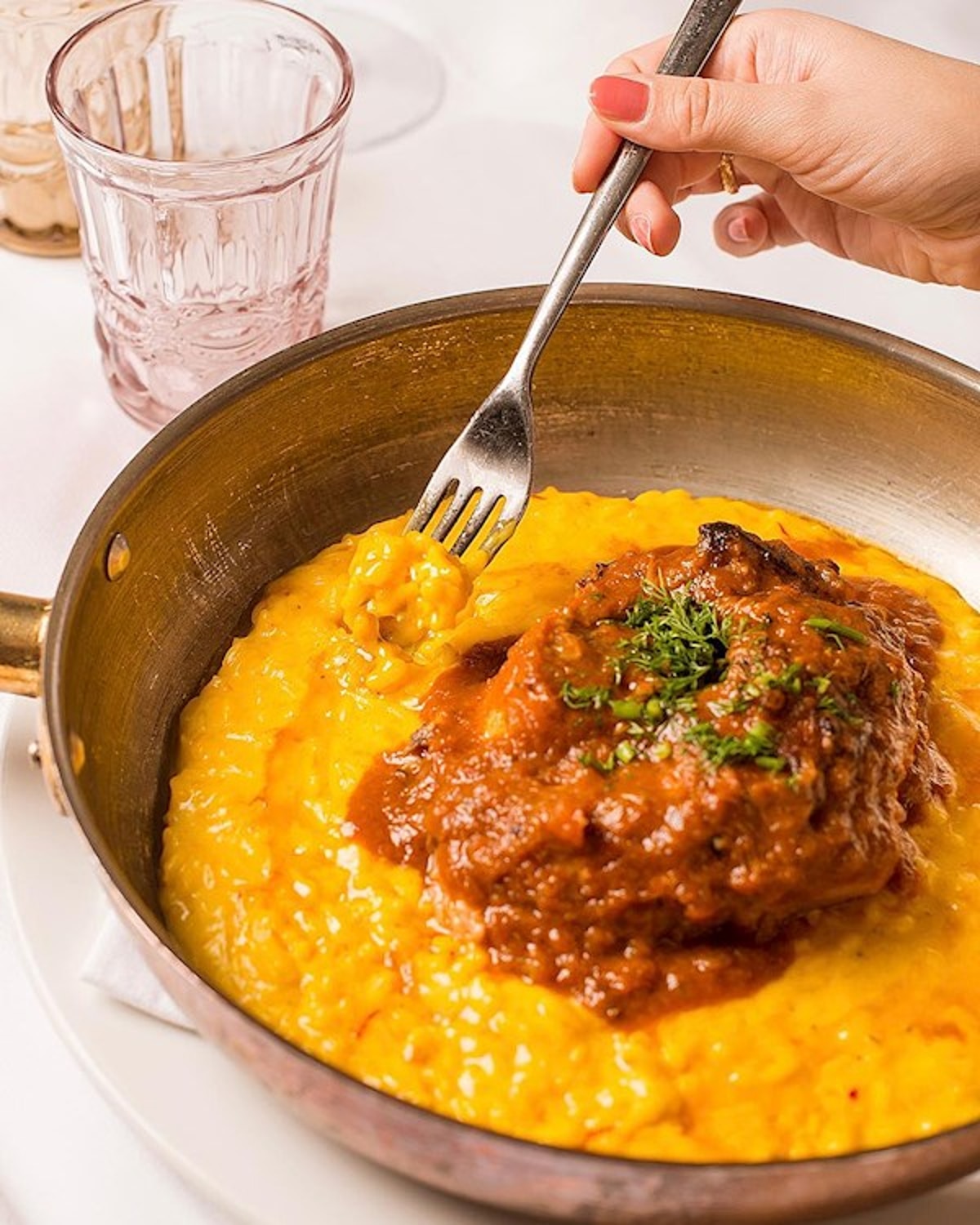
Ingredients
- 1-liter chicken or vegetable stock
- 1 onion, diced
- 4 tbsp butter
- 400g Arborio rice
- 50g bone marrow (optional)
- Saffron threads
- Parmesan, grated
Instructions
- In a saucepan, bring the stock to a simmer. In a pan, sauté the onion in butter until soft. Add rice and toast for 2-3 minutes.
- Stir in marrow and saffron. Add 1/2 cup stock and cook, stirring, until absorbed. Continue adding stock 1/2 cup at a time, stirring constantly, until rice is creamy but still has bite, 20-25 minutes.
- Remove from heat and stir in butter and Parmesan. Season with salt. Serve immediately garnished with more Parmesan.
Signature Ingredient: Tomatoes bring sweetness and acidity integral to classic preparations from sauces to pasta dishes and more.
- China
Home to the world's oldest continuing civilization, Chinese cuisine builds on thousands of years of agricultural development and regional specialization. With incredible diversity across its vast landscape, cooking methods emphasize freshness, balance, and complexity achieved through subtle applications of taste, texture, and temperature.
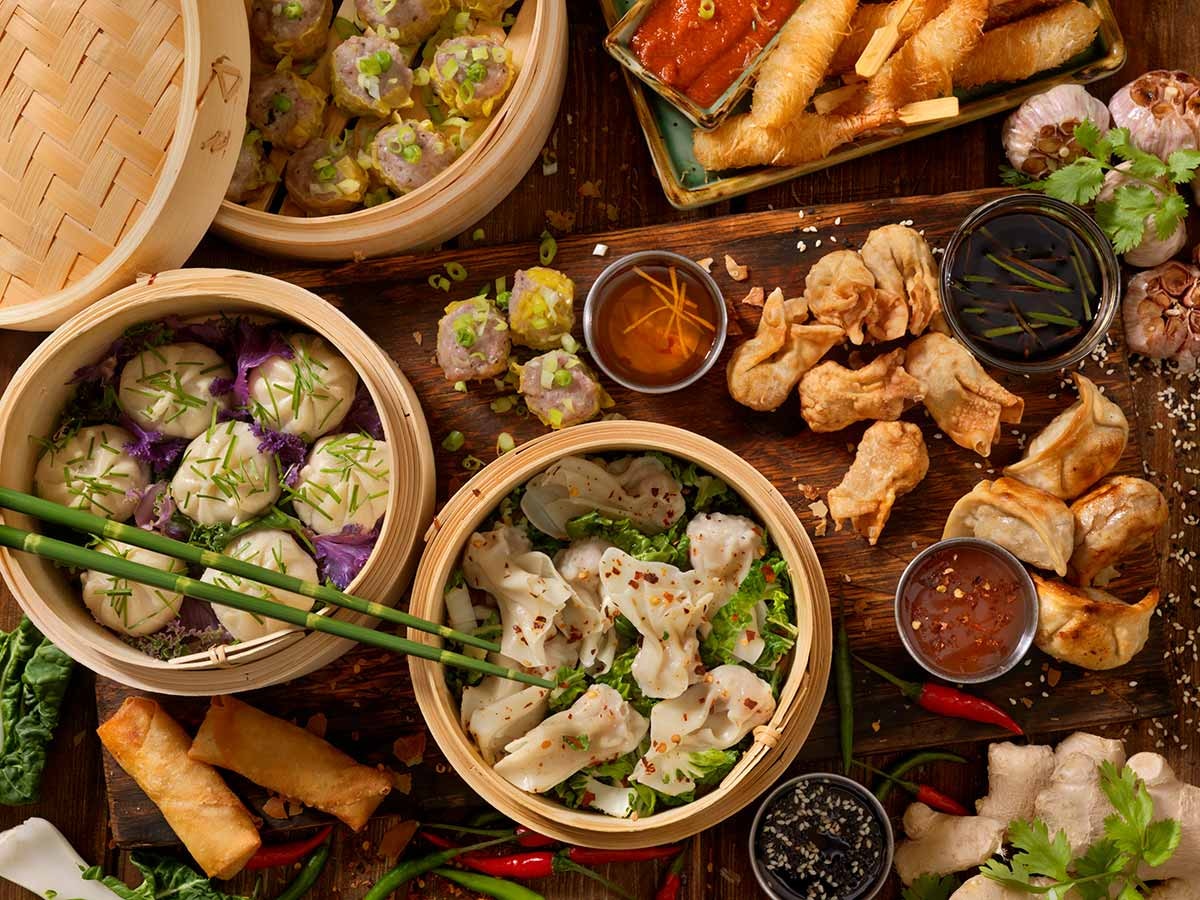
Rice, soybeans, and tea form the backbone of Chinese diets, each leaving distinctive marks on local foodways. Fermented products such as soy sauce and vinegar add nuanced flavors. Cooked without oil, steaming draws out vegetables' natural nutrition while maintaining color and texture. This technique speaks to the Chinese commitment to harmony with nature.
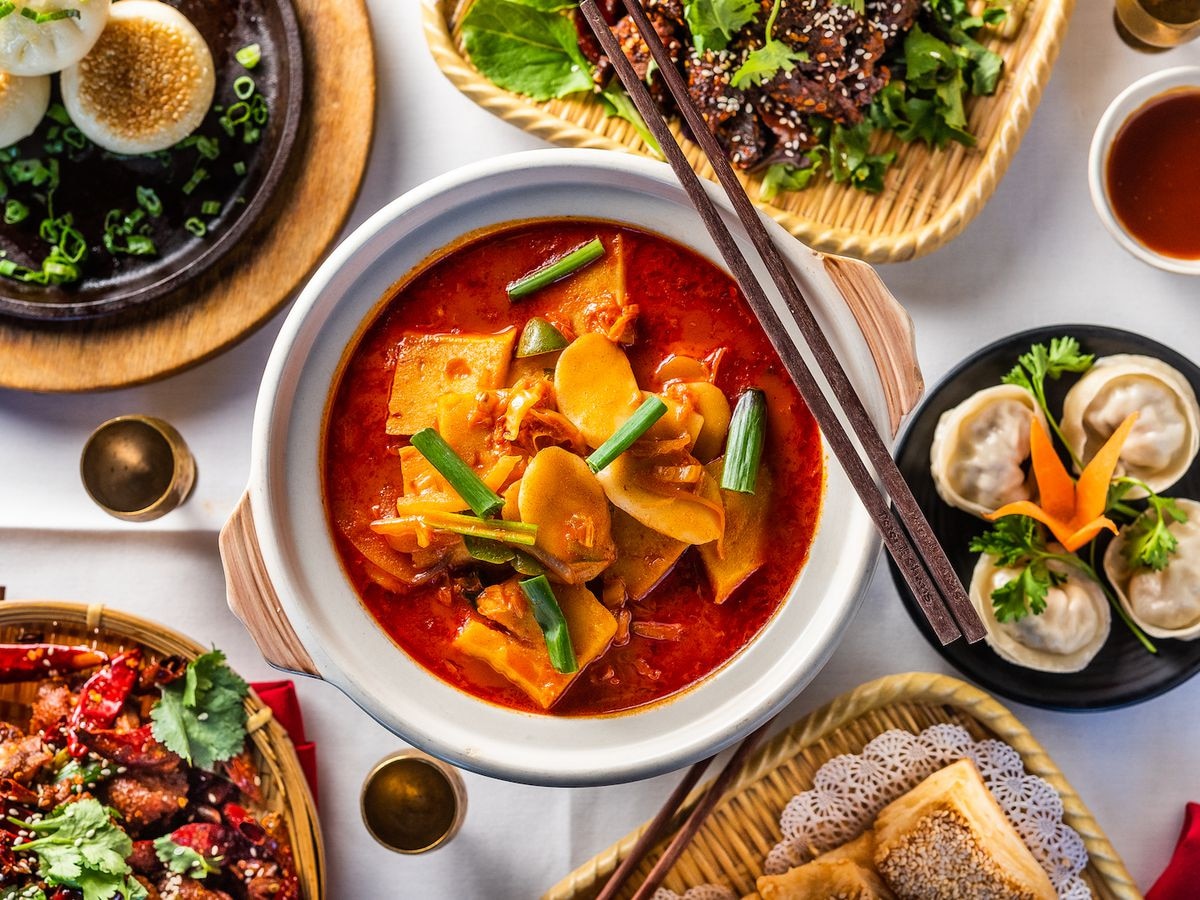
Recipe: Mapo Tofu
From Sichuan province comes Mapo Tofu. A classic Chinese dish, its name translates to "pockmarked grandmother's tofu." Rich and complex, the tofu is braised with ground meat and spicy broad bean and chili paste. A balance of textures emerges as soft tofu contrasts crunchy ground pork and Sichuan peppercorn's tingly heat.
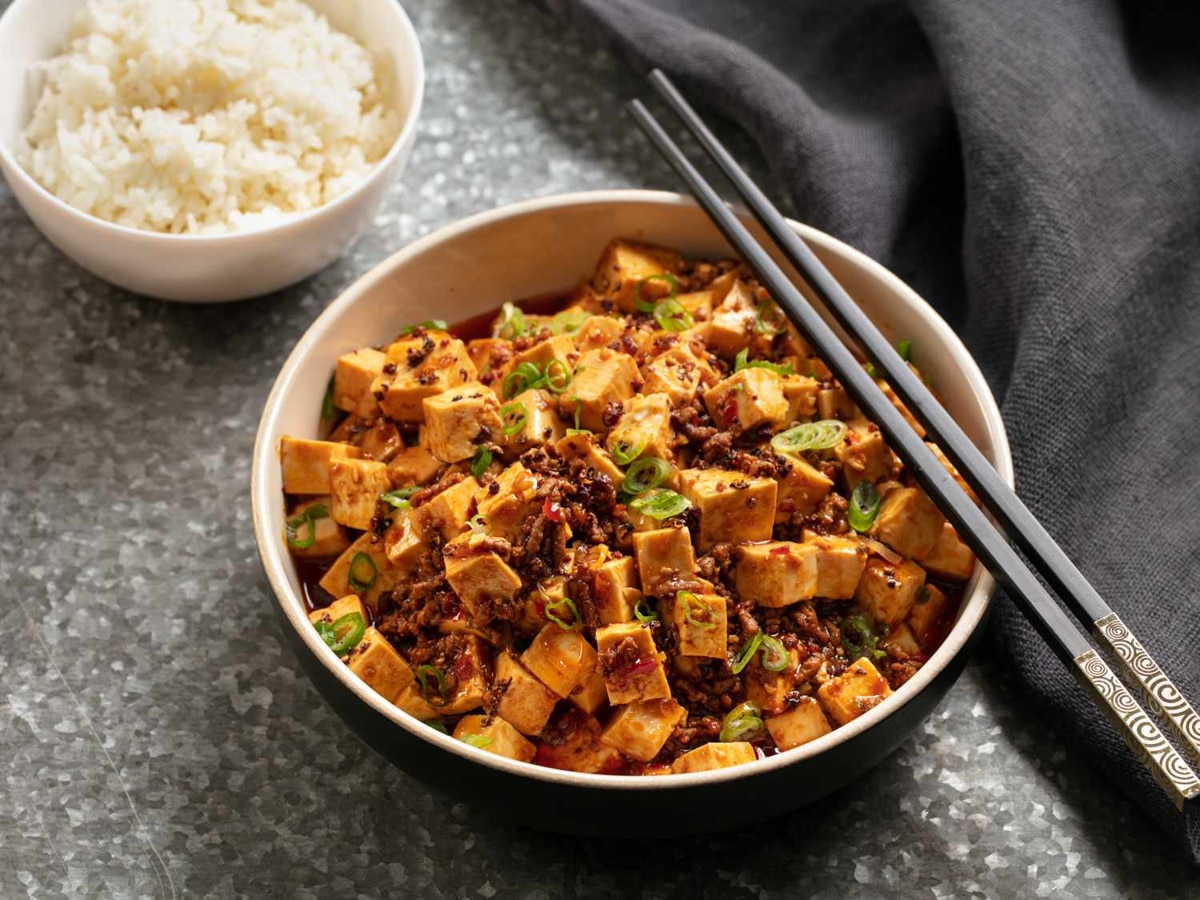
Ingredients
- 14 oz firm tofu
- 8 oz ground pork
- 2 tbsp broad bean paste
- 2 tbsp chili crisp
- 2 cloves garlic, minced
- 1 inch ginger, grated
- 1/4 cup chicken broth
- 2 tbsp cornstarch
- 2 tbsp soy sauce
- Green onions
- Sichuan peppercorns
Instructions
- In a wok, cook the pork until no longer pink.
- Add remaining ingredients except tofu and bring to a simmer.
- Gently fold in tofu to coat and heat through.
- Serve over rice, garnished with scallions.
Signature ingredient: Soy sauce lends umami depth while imparting a slight sweetness.
- Mexico
Mexico's cornucopia of flavors results from indigenous ingredients paired with Spanish techniques and African influences. Throughout the country, street foods allow culinary innovations to flourish affordably. Tortillas, triangular flags of masa harina, trace their ancestry back thousands of years and now occur in countless forms across the nation.
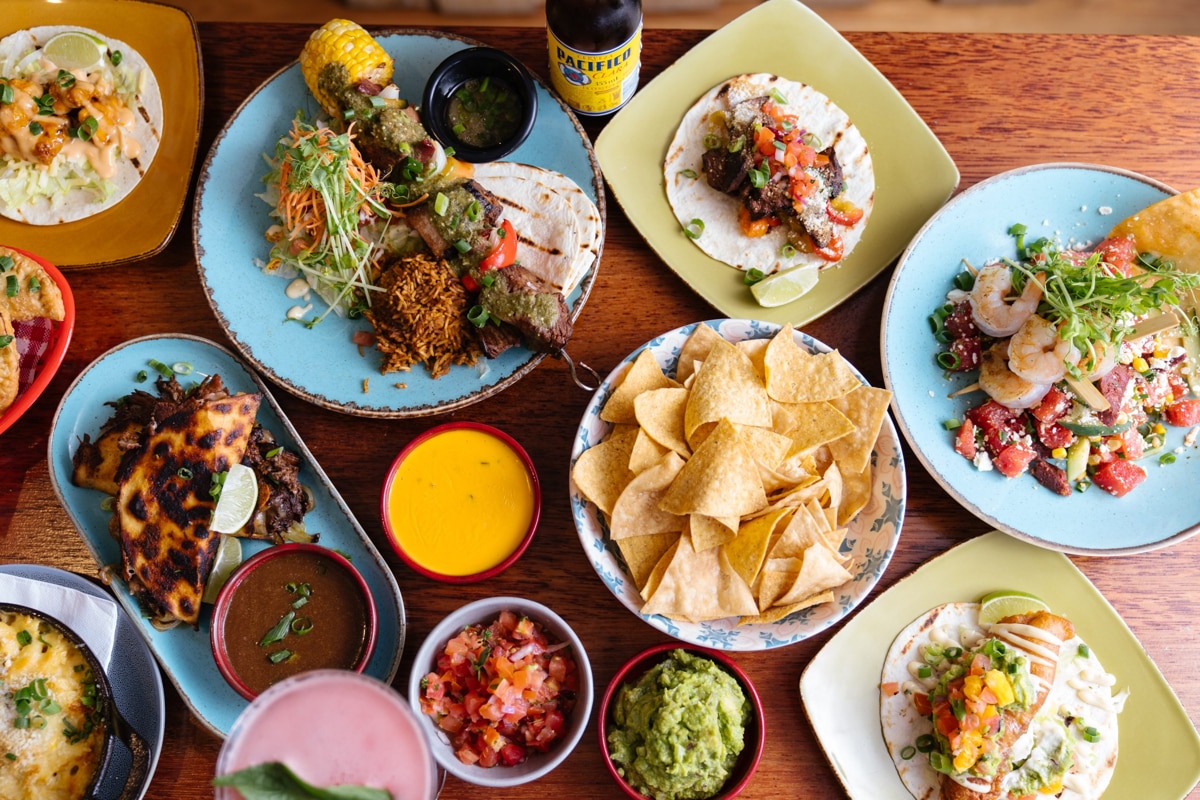
Chilies, cultivated for millennia, brought fiery notes that defined Mexican cuisine. Types like ancho and chipotle add smoke and warmth to moles, and sauces crafted from chilies, nuts, and spices. Tomorrow's flavors emerge today as chefs celebrate pre-Columbian ingredients like pumpkin seeds and cacao alongside European arrivals like rice.
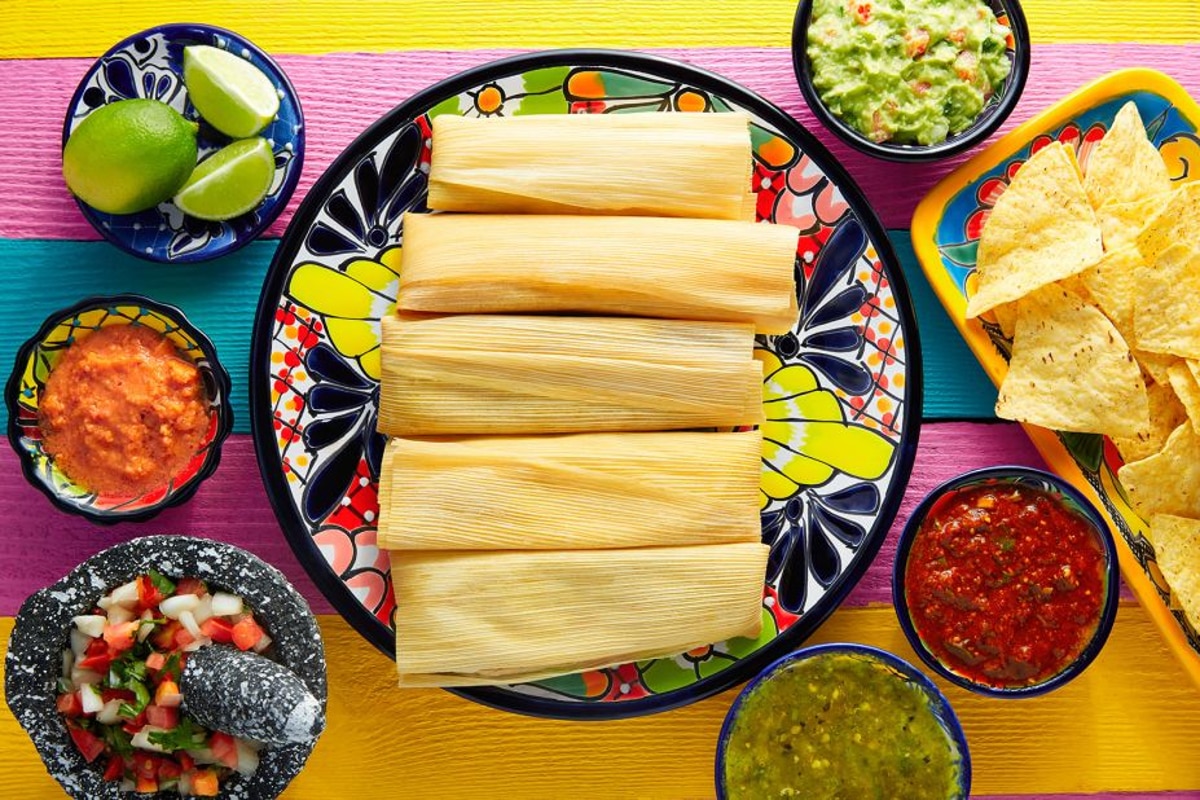
Recipe: Mole Poblano
From the state of Oaxaca comes a staple savory snack, Mole Poblano. Considered the "king" of moles, its complex blend contains over 20 ingredients including different dried chilies, spices, plantains, nuts, and more. While recipes vary, their depth comes from a painstaking process: individual components are dried, toasted, soaked, and ground before being added to a saucepot a spoonful at a time.
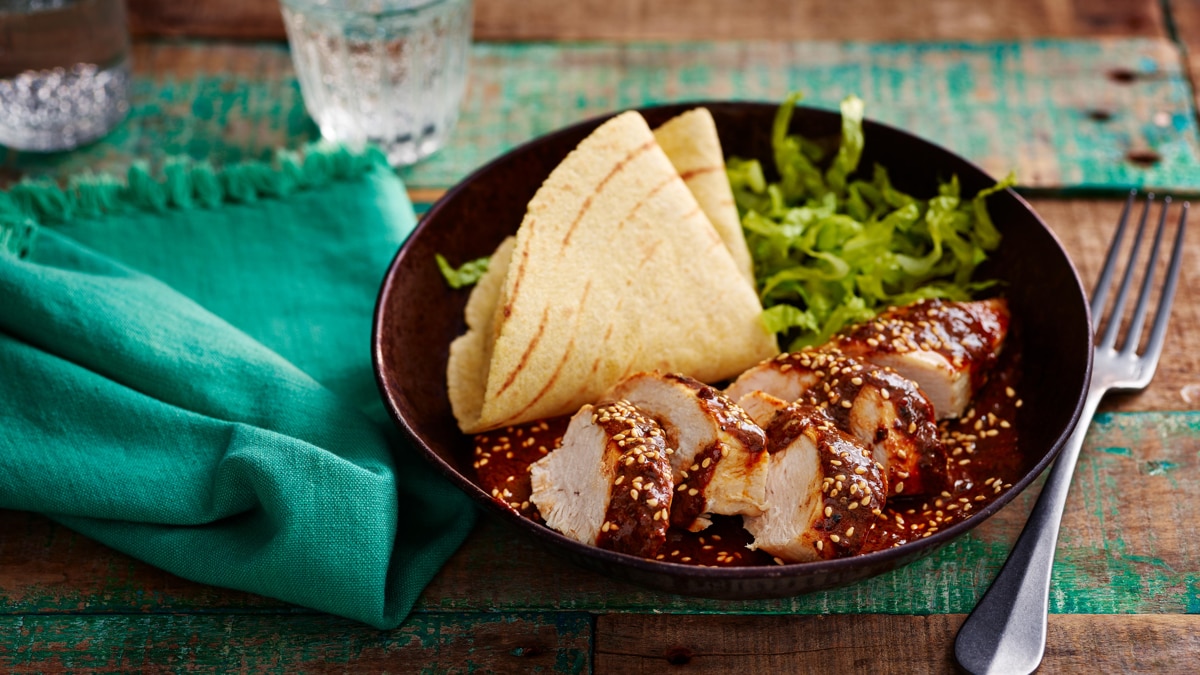
Ingredients
- 2oz mix of dried chilies
- 1/4 white onion
- 4 cloves garlic
- 1/4 cup pumpkin seeds
- 1/4 cup sesame seeds
- 1/2 cup chicken broth
- 1/4 cup unsweetened cocoa powder
- 1/4 tsp clove, cinnamon, allspice
- Salt to taste
Instructions
- In a comal or pan, toast chilies, onion, garlic and seeds.
- Soak in broth for 30 mins.
- Process until smooth, stir into a pot, and simmer for 30 mins, adding spices near the end.
- Serve over chicken or enchiladas.
Signature ingredient: Chilies bring the defining flavors of smokiness and heat.
- India
Home to a dizzying diversity of cultural influences and religions across its vast subcontinent, Indian cuisine weaves together regional specialties into cuisine as vibrant as its textiles. Staples like rice, lentils, and wheat evolved varying preparation styles correlating to available local ingredients.
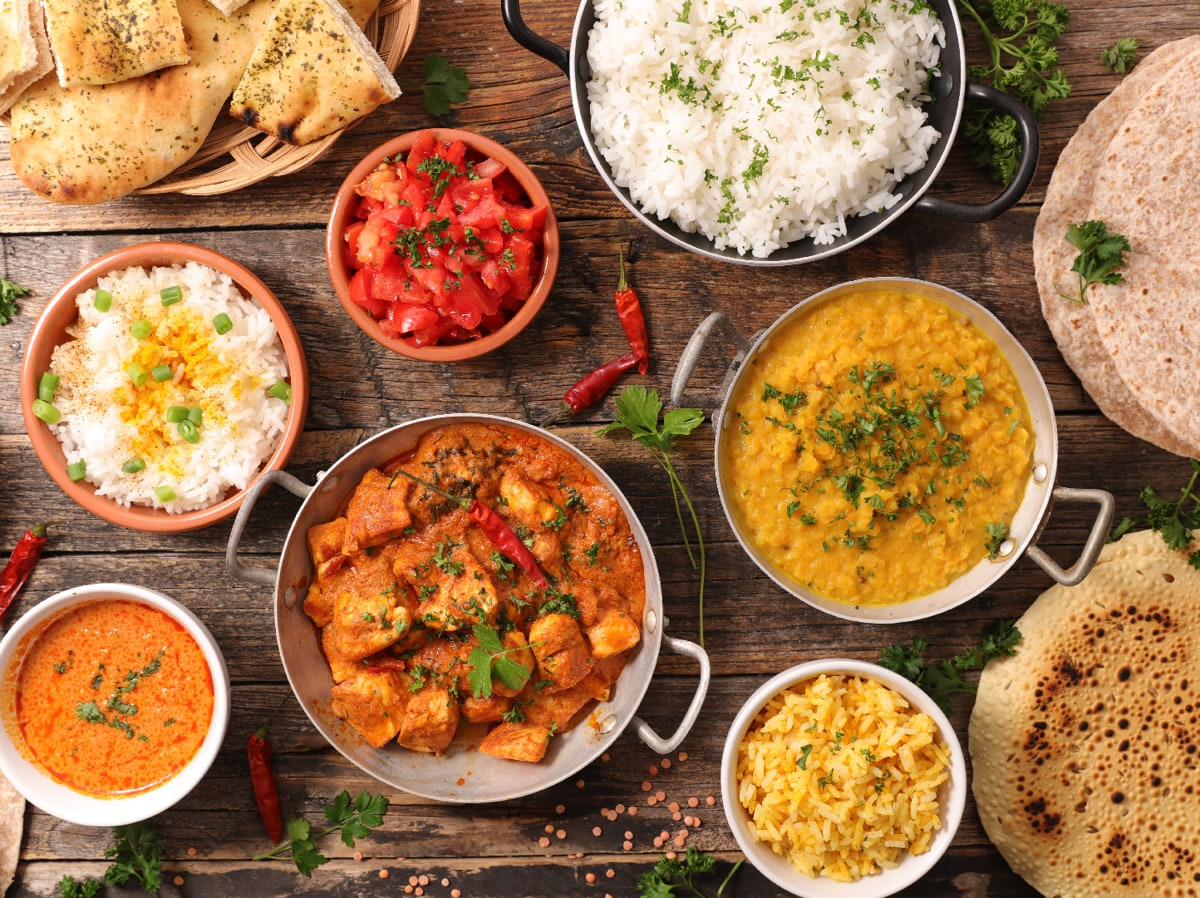
Complex spice blends lay the aromatic foundations for curries. Garam masala awakens the senses with cinnamon, cumin, coriander, and more. Coconut lends body while tamarind and curry leaves impart tart, herbaceous flavors. Few cuisines better illustrate how plants from around the world integrate flavor profiles when combined judiciously.
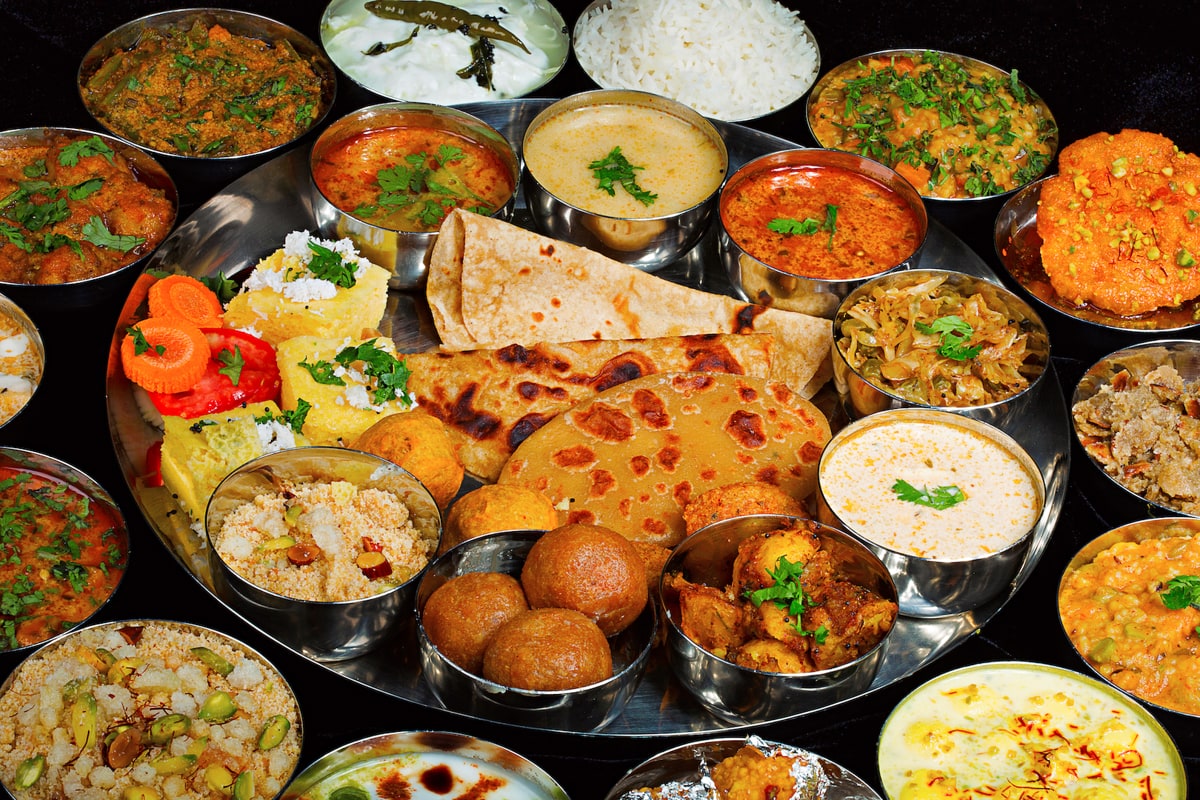
Recipe: Mulligatawny Soup
Originating in West Bengal is a traditional broth-like preparation called Mulligatawny Soup. Spices simmer with vegetables, coconut milk, and lentils into a soothingly warm meal. Variations range from mild to richly spiced, tailored to suit individual palates. A staple on colonial tables, its name stems from the Tamil words for pepper water.
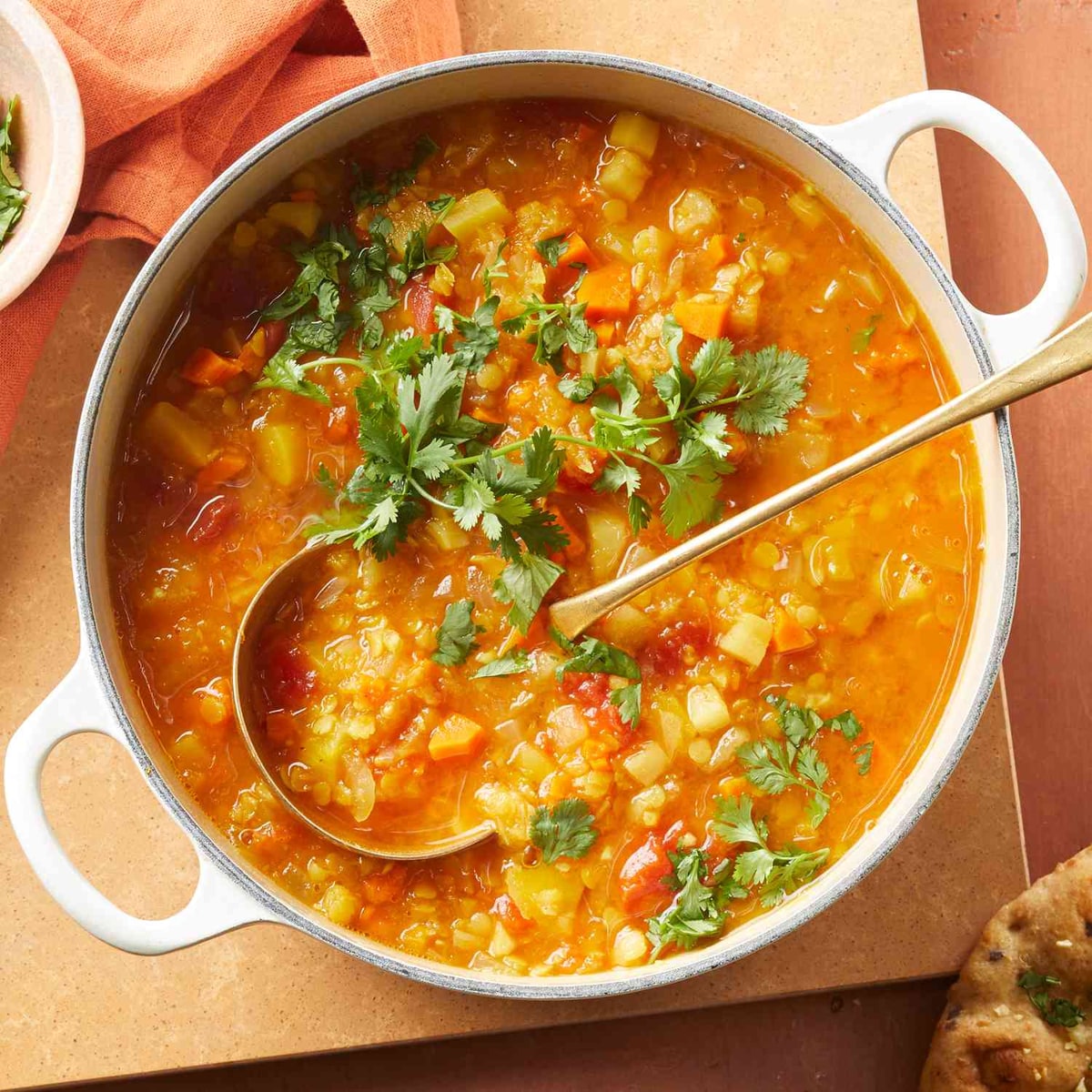
Ingredients
- 1 onion, diced
- 1 apple, diced
- 1 tbsp curry powder
- 1/2 cup red lentils
- 6 cups broth or water
- 1 cup coconut milk
- Salt, and pepper to taste
- Chopped cilantro for garnish
Instructions
- In a pot, simmer the onion, apple, and curry powder in broth until tender.
- Add lentils and coconut milk, and simmer for 20 more minutes.
- Ladle into bowls and garnish with cilantro.
Signature ingredient: Spices formed the DNA of Indian cuisines across regions.
- Japan
Through refined techniques and an appreciation for detail and seasonality, Japanese cuisine has long spotlighted simplicity. Steamed rice underpins lightweight meals with exquisite presentation. Soups like miso simmer nourishing beans and seavegetables alongside meats and fish.
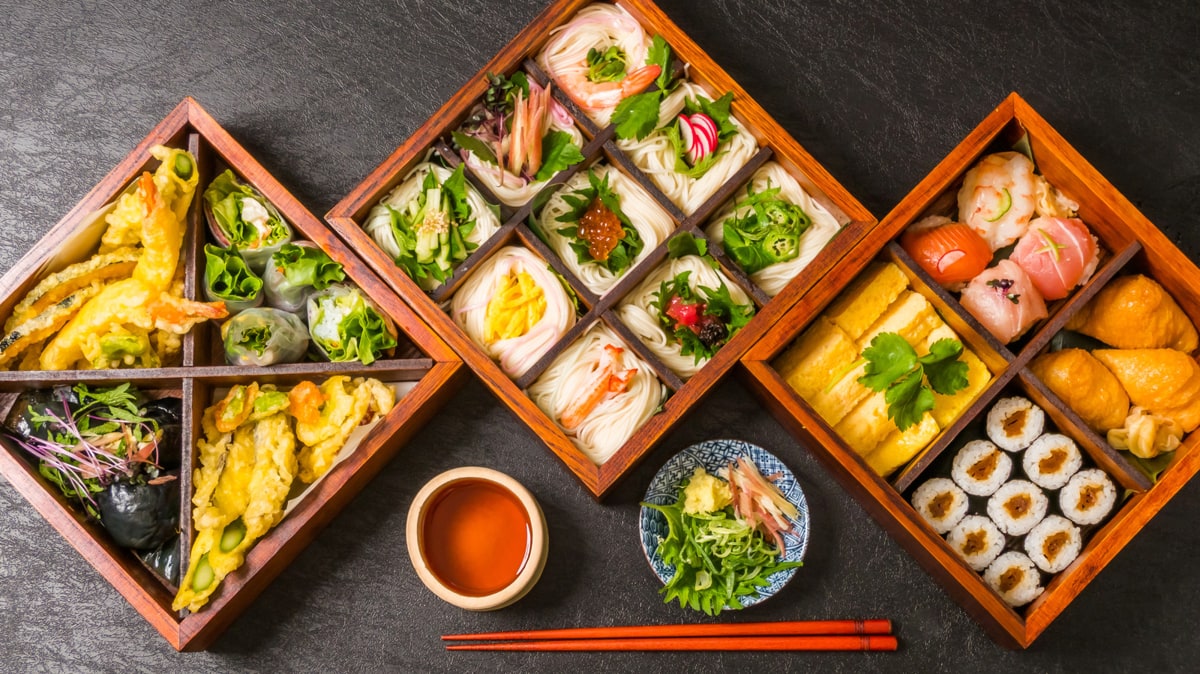
Fermented soybeans lend umami-rich sauces integral across kitchens. Soy, rice, and dashi stock unite to form flavors both robust and light. Natto breakfasts with rice demonstrate fermentation’s starring role. Healthful pickled vegetables like daikon and ume balance many plates.

Recipe: Gyoza
Snacking on small bites aids mindfulness through perfect morsels. Among these are gyoza, dumplings filled with ground pork and vegetables. Their skin wrappers are as thin as falling snow. Prepared by pan-frying or boiling, gyoza is served as appetizers or light mains.
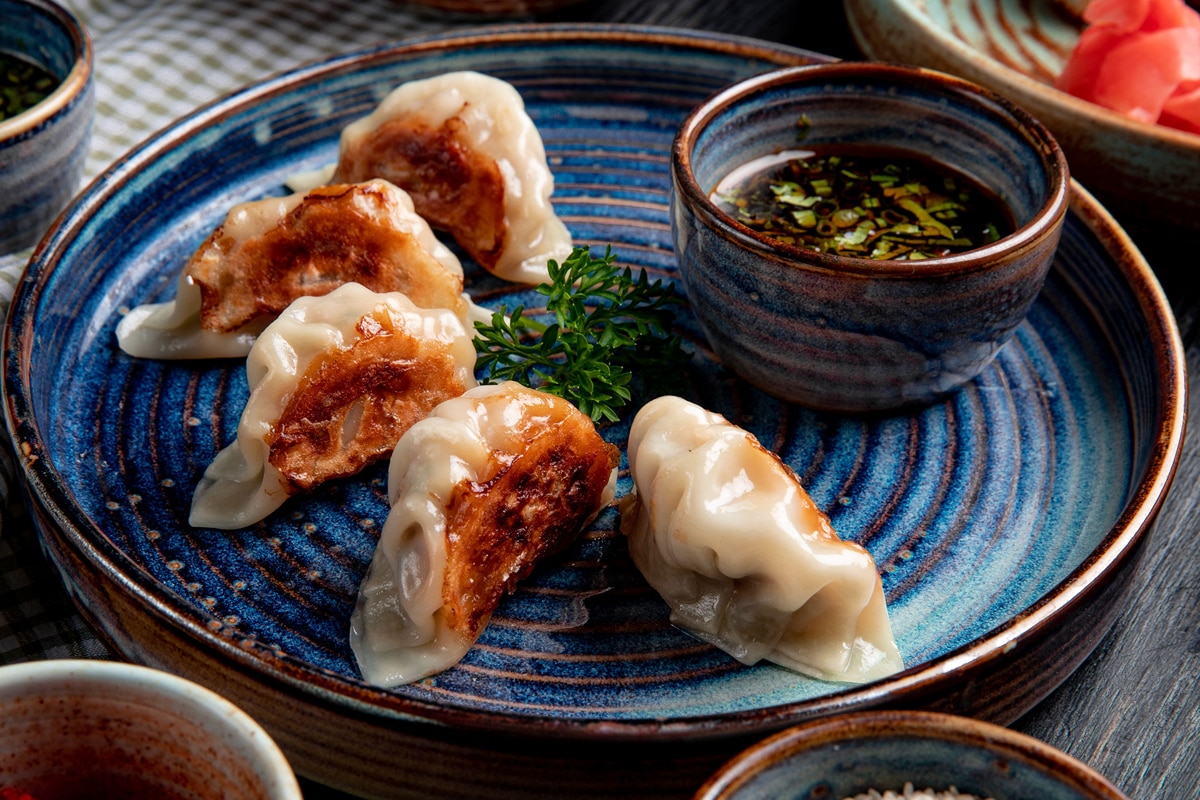
Ingredients
- 1 lb ground pork/chicken/shrimp
- 4 cups shredded cabbage
- 2 cloves garlic, minced
- 1-inch ginger, grated
- Soy sauce, rice vinegar, sesame oil
- Won ton wrappers
- Neutral oil for cooking
Instructions
- In a bowl, mix meat with cabbage, garlic, and ginger.
- Add 1 tbsp each soy, vinegar, oil.
- Form wrappers around filling, and seal edges.
- Pan fry until browned.
- Drain on a paper towel.
- Serve with dipping sauce.
Signature ingredient: Miso lends savory depth while containing a signature nutritional punch.
- Greece
Greek cuisine highlights the bounty of the Mediterranean through simple preparations celebrating quality seasonal ingredients. Olive oil and olives are central to lifestyle and economy. Halloumi cheese’s preservation in brine allows versatile grilling. Fresh seafood arrives daily from coastal regions with calamari, octopus, and sardines prepared variously.

Wheat forms breads like pita and choriatiki, served at every meal. Retsina wines gained international notoriety through centuries of aging in resin-coated barrels, lending pine notes to pair with mezedes like taramasalata fish roe dip. Tomato and cucumber salads bolster numerous appetizer spreads.
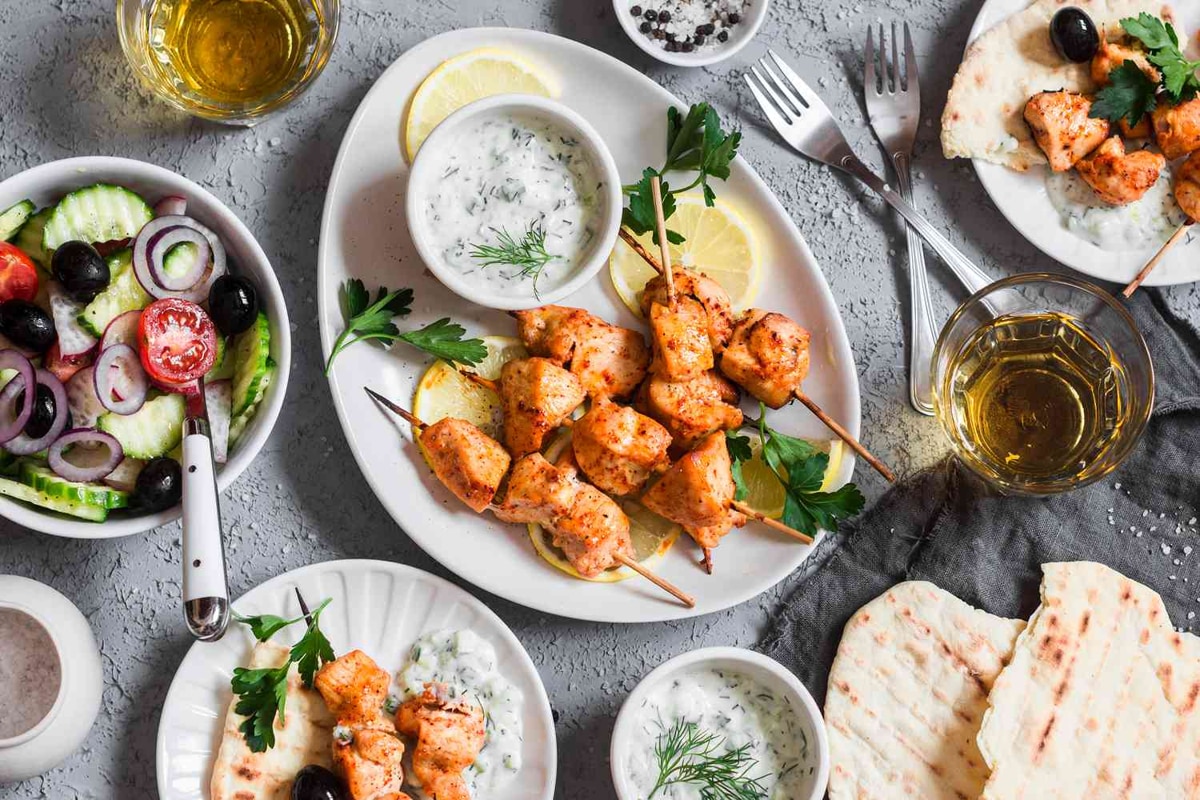
Recipe: Moussaka
Though eaten year-round in every Greek home and restaurant, moussaka elevates seasonal eggplant into a satisfying indulgence. Layers of sliced eggplant, chicken or lamb ragu, béchamel, and cheese topping bake into an earthy gratin. Restorative and shareable, moussaka epitomizes Greek comfort.
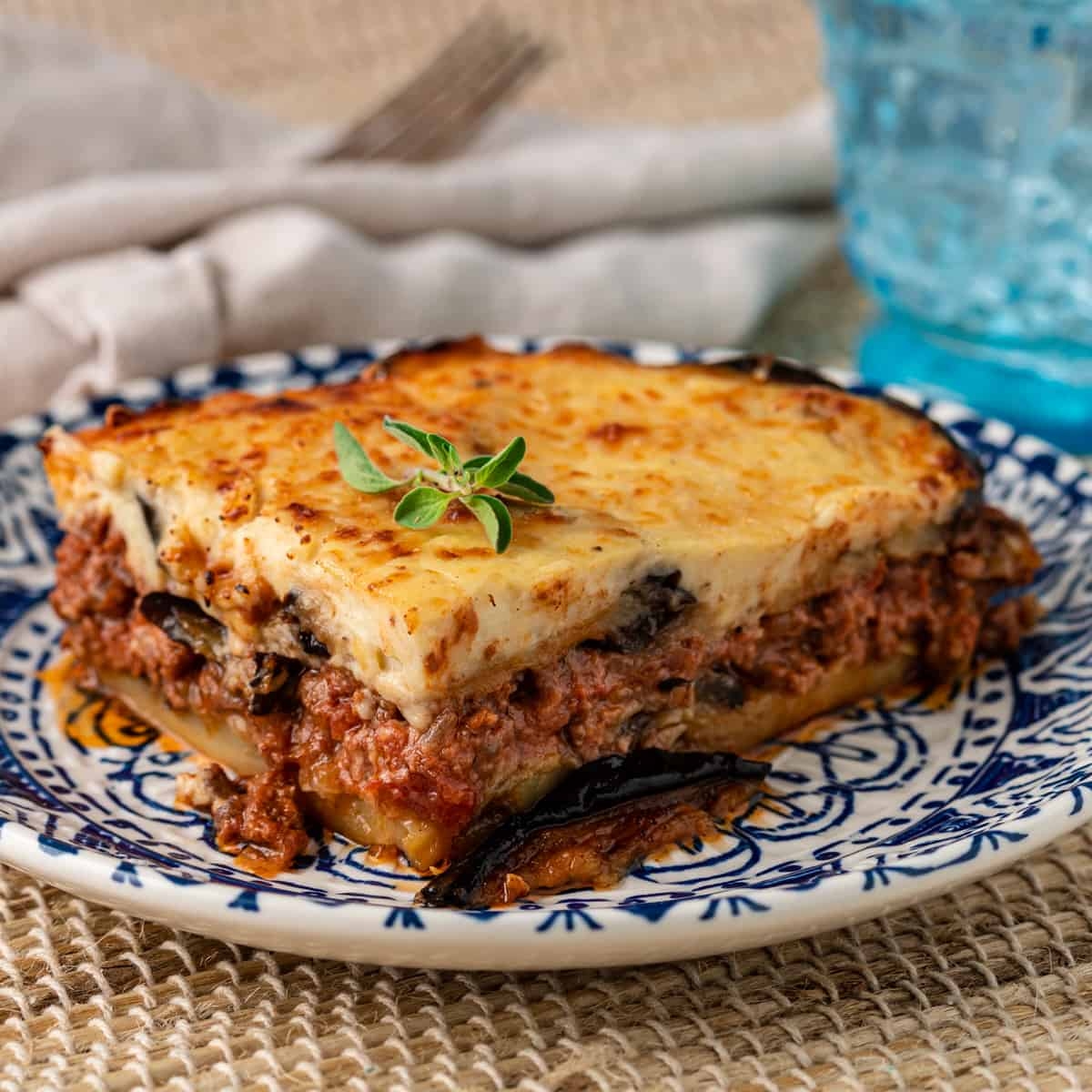
Ingredients
- 2 lbs eggplant, sliced
- 1 lb ground lamb or beef
- 1 onion, diced
- 3 cloves garlic, minced
- 1 tbsp tomato paste
- Béchamel sauce
- 1 cup shredded cheese
Instructions
- Sauté meat and onions.
- Add tomato paste and simmer.
- Layer in a baking dish with eggplant and béchamel.
- Top with cheese.
- Bake at 350°F until bubbling.
- Serve warm.
Signature ingredient: Olive oil essential for cooking, signature salads, and more.
- Spain
Artfully combining Old World tradition with New World ingredients, Spanish cuisine captivates globally. Its foundation lies in simple preparations highlighting quality foods seasonal to each region. Harmony emerges from pairing aromatic staples like onions, garlic, and chilies with meats, fish, and locally grown vegetables.
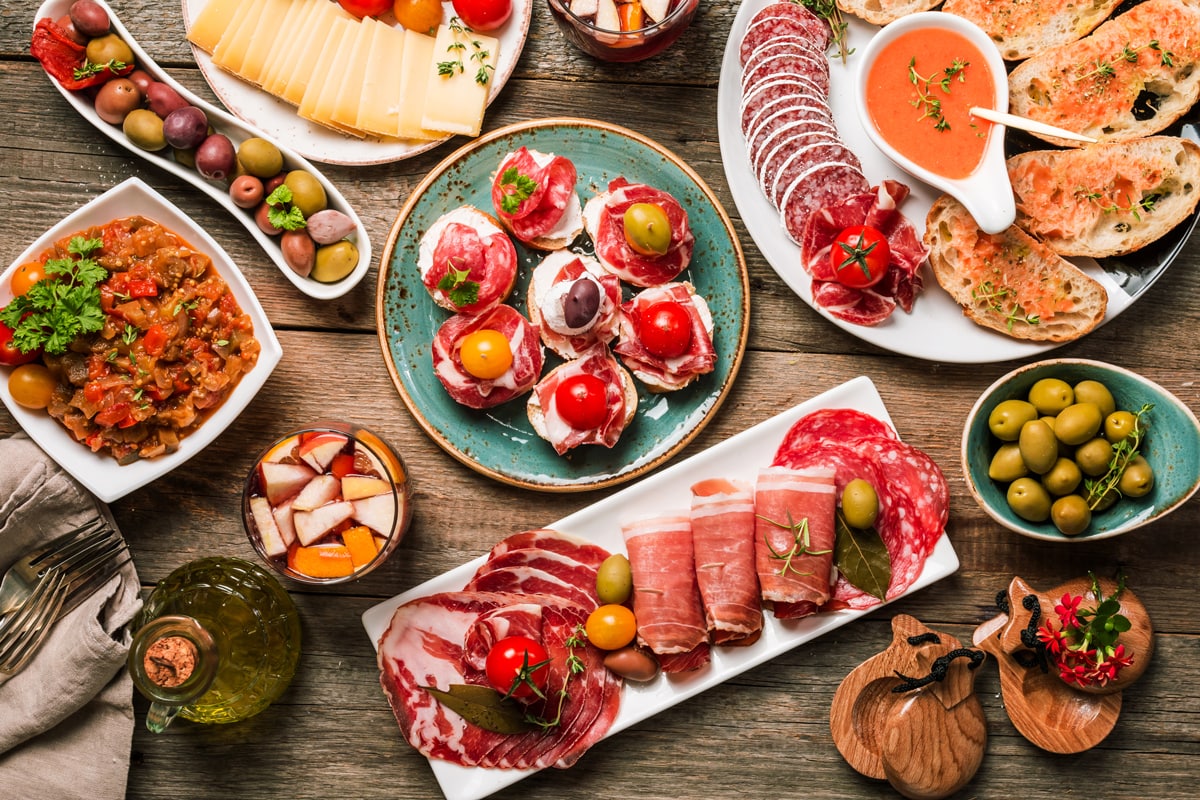
Jamón ibérico, acorn-fed cured ham renders buttery umami. Paella originated as a means of cooking rice outdoors, with varieties distinguished by preferred protein (seafood, meat, or mixed). Olive oil craft varies from fruity green to bold and peppery.
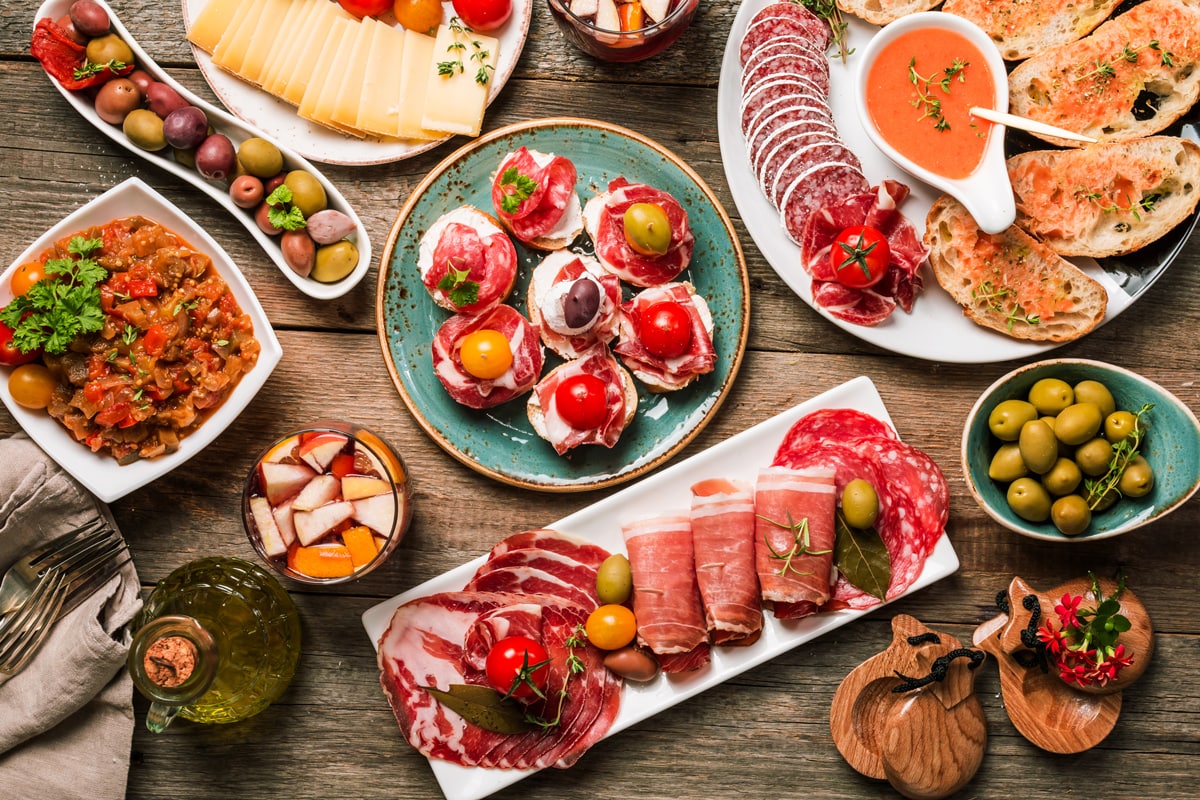
Recipe: Patatas Bravas
Catalonia gifts pan con tomate, fresh bread rubbed with ripe tomatoes. A light snack, its origins remain debated yet value lies in accentuating summer's flavors. Elsewhere, paprika dusts patatas bravas, boiled potatoes with spicy tomato sauce. Both embody the Spanish virtues of highlighting simple ingredients through deft seasoning.
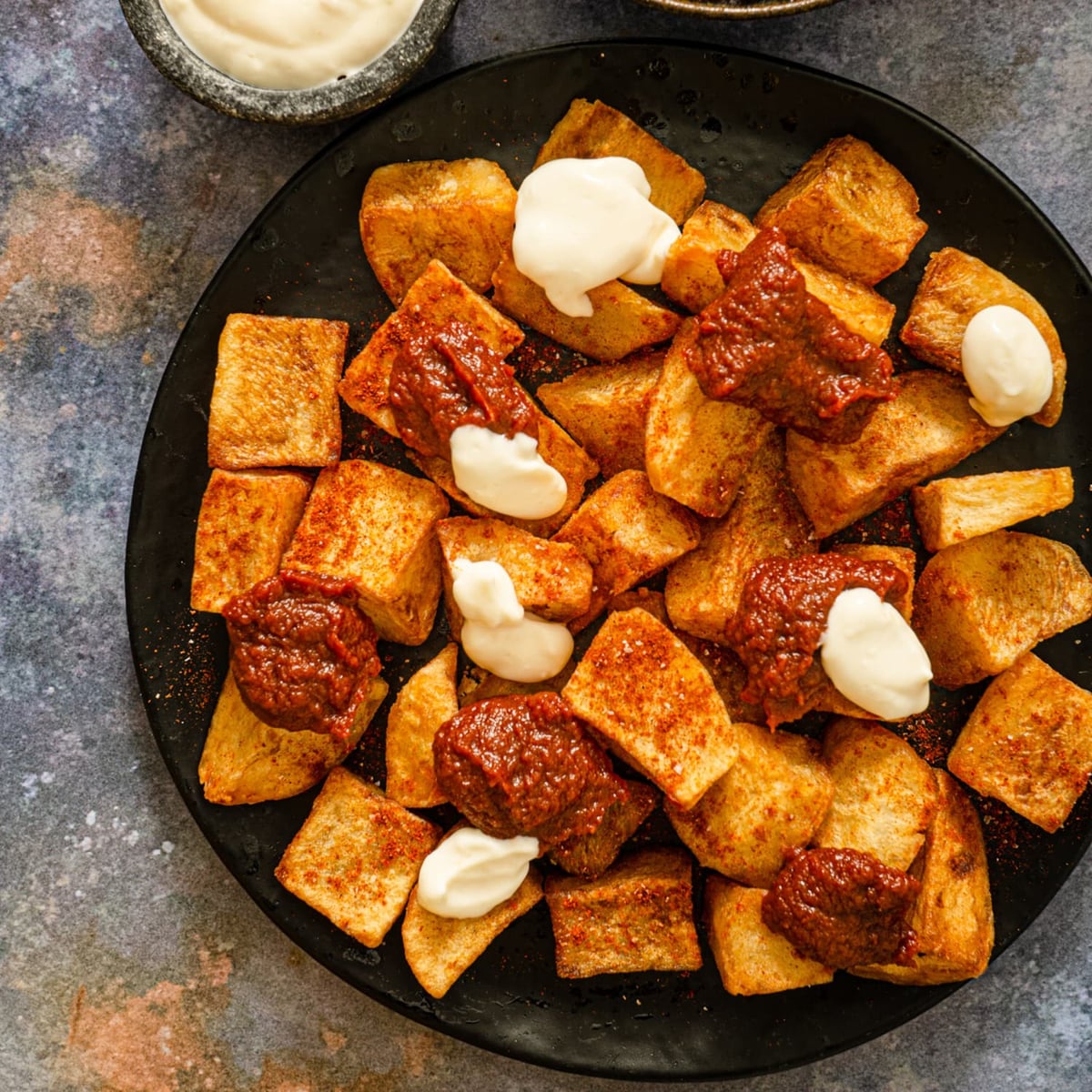
Ingredients
- 1 lb small red potatoes, cubed
- Olive oil
- Sweet smoked paprika
- Salt
- Garlic, chopped
- Tomato sauce
- Aioli for serving
Instructions
- Boil potatoes until just tender.
- Toss with oil, paprika, salt and garlic.
- Roast until crisp.
- Serve with tomato sauce and aioli for dipping.
Signature ingredient: Olive oil and garlic form the backbone of Spanish flavor.
- Thailand
Complex curries distinguish Thai cuisine, balancing the four elements of spicy, sour, sweet, and salty. Palm sugar complements chilies while delicate galangal and kaffir lime offer herbal aromatics. Fish sauces add nuanced salt depths. Fermented soy and rice complement curries or standalone dishes like som tum, spicy green papaya salad.
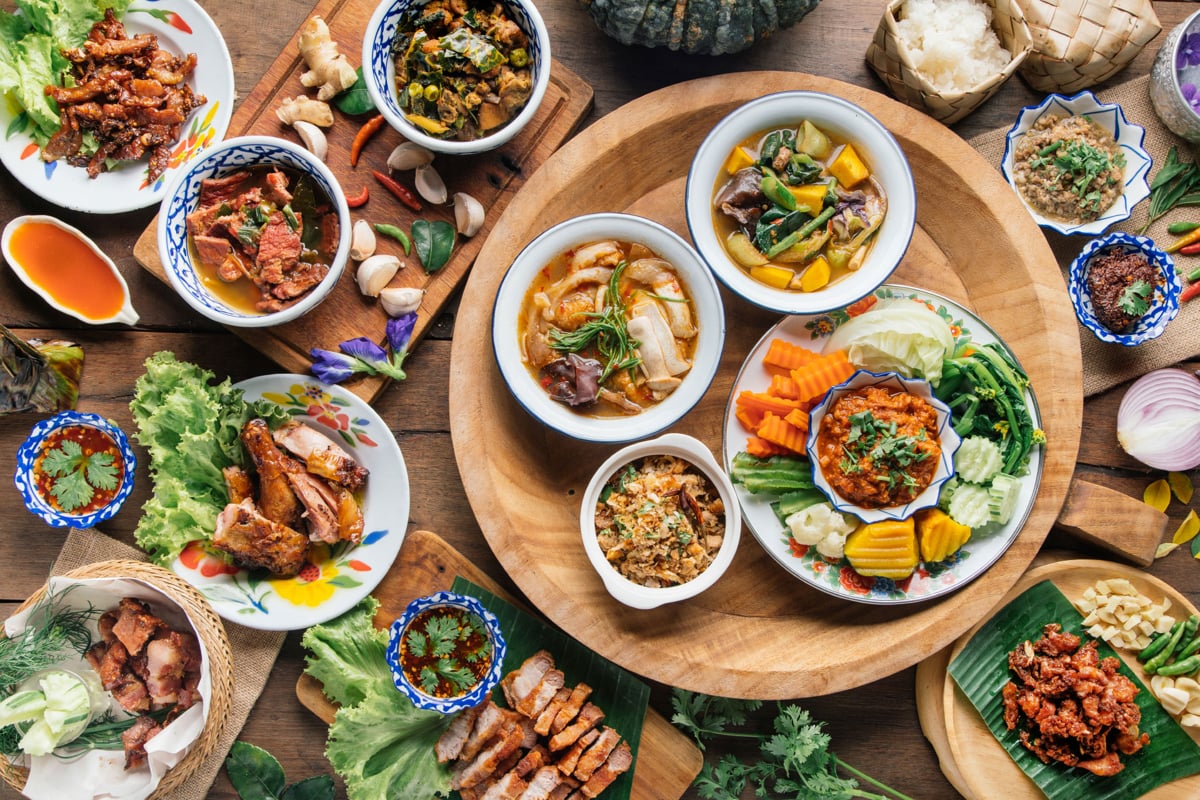
Street stalls line walkways presenting appetizing vistas of fresh produce. Lemongrass stalks impart citrus floral notes to soups like tom yum. Rice remains integral while noodles appear in soups or fried pad Thai dishes. Coconuts and their innards infuse many preparations with creaminess.
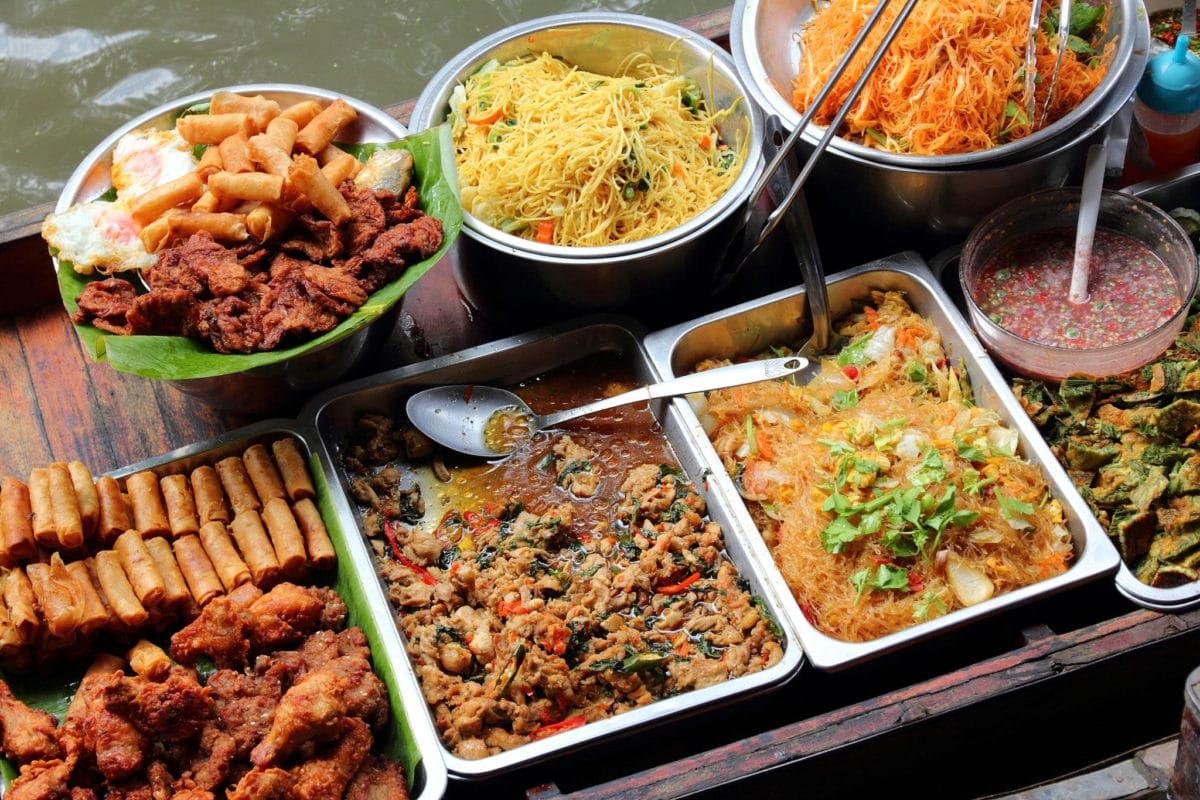
Recipe: Lemongrass Chicken Curry
Lemongrass Chicken combines the aromatic stir-fry flavors of Thailand. Lemongrass simmers with the whole bird then shreds for sublime curry over rice. Its golden crust shelters tender morsels infused with herbaceous zest. Creamy coconut milk balances the other elements into a warming one-pot meal.
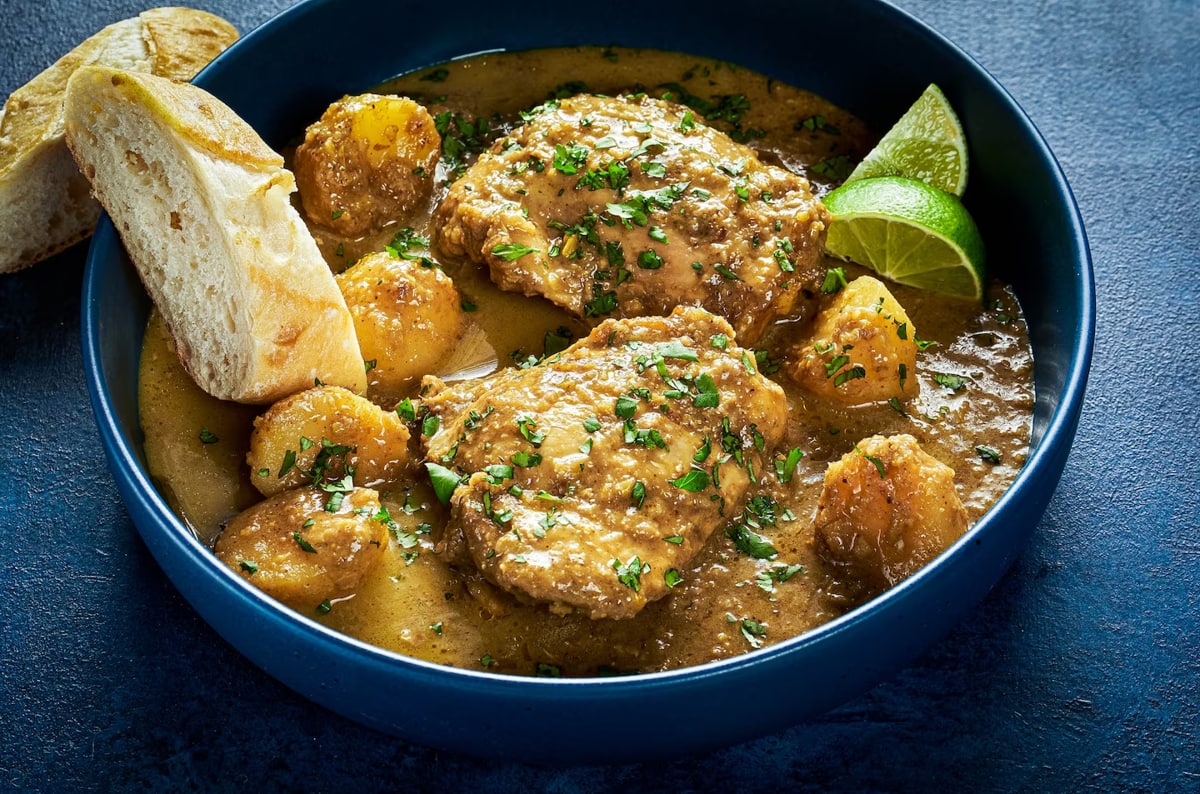
Ingredients
- 1 whole chicken
- 4 lemongrass stalks
- 1 can of coconut milk
- 1 tbsp red curry paste
- Lime, fish sauce, sugar to taste
- Rice and herbs for serving
Instructions
- Simmer chicken with bruised lemongrass for 30 mins.
- Shred meat, and discard lemongrass.
- Simmer curry paste in coconut milk.
- Add chicken. Simmer for 10 mins more, seasoning to taste.
- Serve over rice, garnished with herbs like basil or cilantro.
Signature ingredient: Chili peppers add defining heat and flavor.
- Morocco
Moroccan cuisine draws influences from Berber, Arabic, and Mediterranean culinary traditions. Preserved lemons add a salted citrus punch while preserved olives provide brininess.
Flatbread-like khubz is ideal for scooping up tagines - aromatic meat and vegetable stews braised in earthenware pots. Preserved meats like merguez sausage enliven tagines.
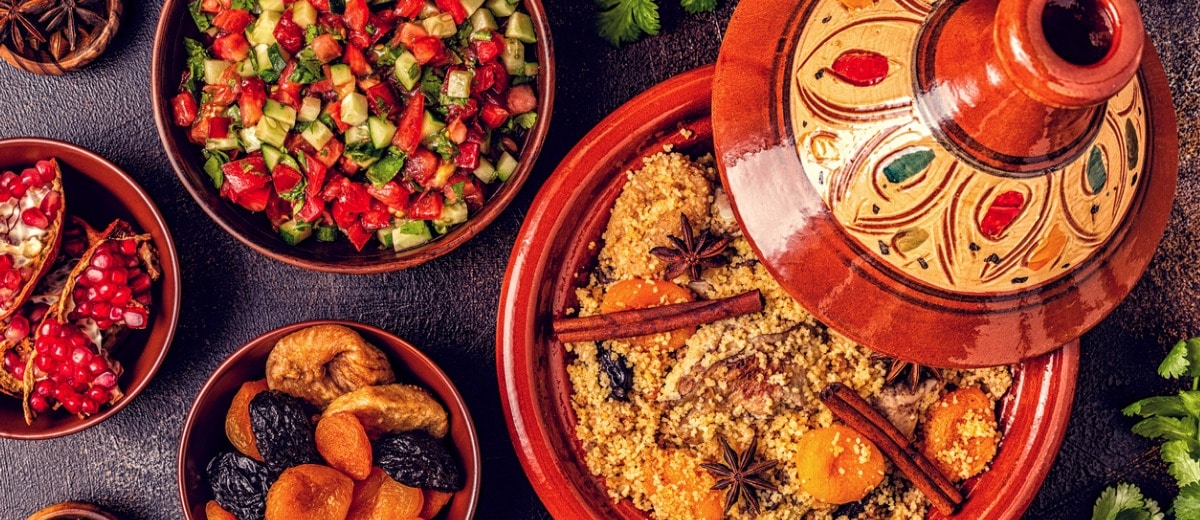
Recipe: Vegetable Couscous
Vegetarian couscous utilizes fresh herbs and seasonal produce in vibrant salads or as an accompaniment to tagines. Dates sweeten tagines and desserts like pastilla flaky pie with nuts and creamy custard. Mint tea lifts spirits throughout the day.
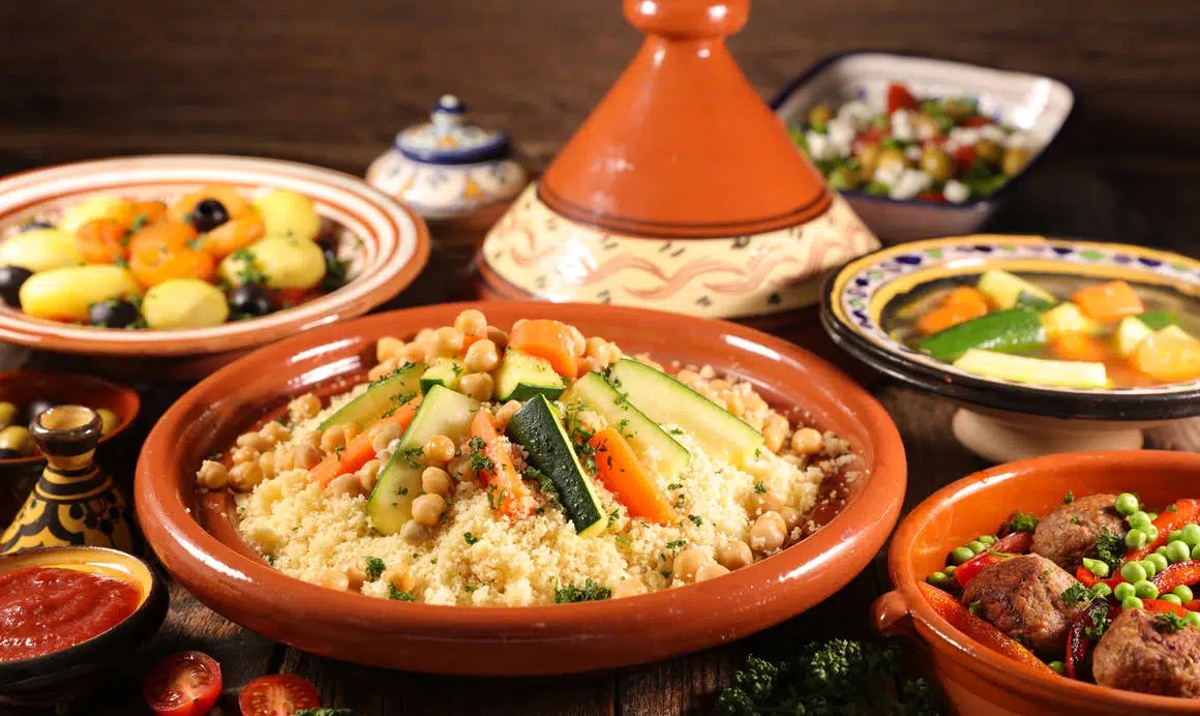
Ingredients
- 2 cups couscous
- 1 carrot, diced
- 1 zucchini, diced
- 1 tomato, diced
- 1/4 cup raisins
- Handful of parsley, mint, olive oil
Instructions
- Prepare couscous according to the package.
- Steam carrot until crisp-tender.
- Toss all ingredients with couscous, dressing with olive oil, salt and pepper.
- Garnish with chopped herbs.
- Enjoy as a light meal or alongside tagines and flatbread.
Signature ingredient: Preserved lemons provide signature salted citrus flavor across Moroccan dishes.
- Turkey
Where East meets West, Turkish cuisine draws equally from Anatolian, Middle Eastern, Balkan, and Central Asian influences. Lentils, bulgur, and rice form the basis of robust stews and salads along the famous Spice Road. Yogurts impart cooling tanginess throughout.
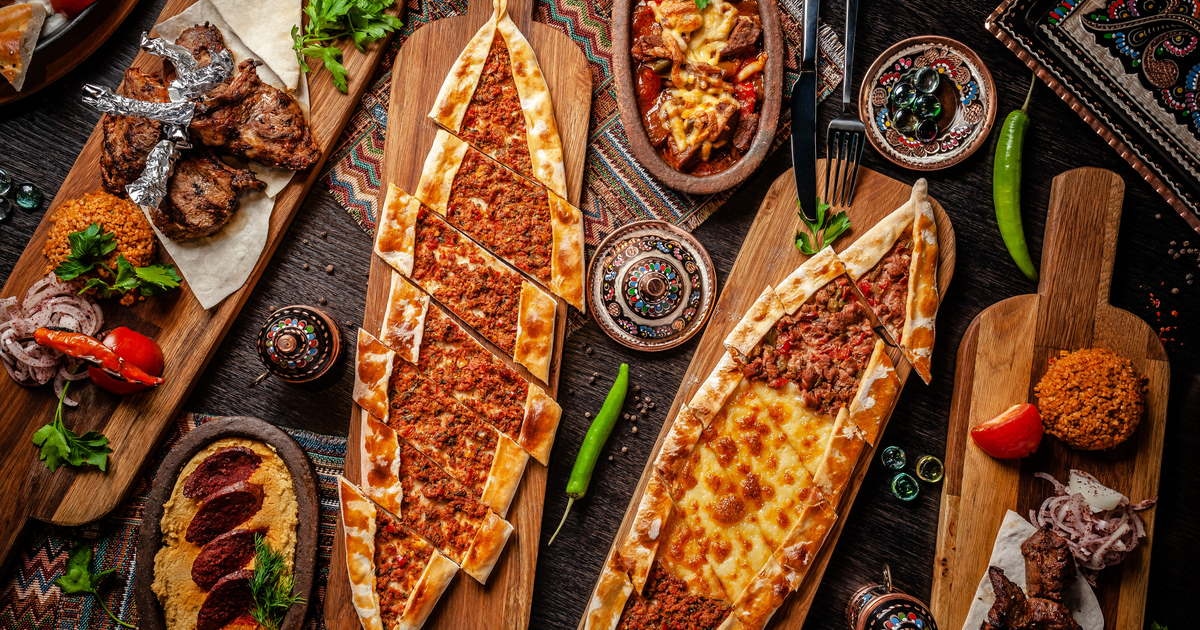
Kebabs reign supreme, perfection attained through marinating and spit-grilling meats like lamb shish and chicken. Köfte meatballs stuffed inside flatbreads make transportable meals. Börek pastries wrap filling like spinach or cheese for baked hand pies. Complex salads balance flavors with peppers, tomatoes, and herbs.
Recipe: Izmir Kofte
Izmir Kofte demonstrates Turkey's skill at layering flavors. Ground lamb and bulgur patties cooked with olive oil, onion, and spices. Served simply or atop rice pilaf, each bite delivers warming spice and herbaceous freshness. Köfte satisfies across any occasion, elevating summer's ripe tomatoes.
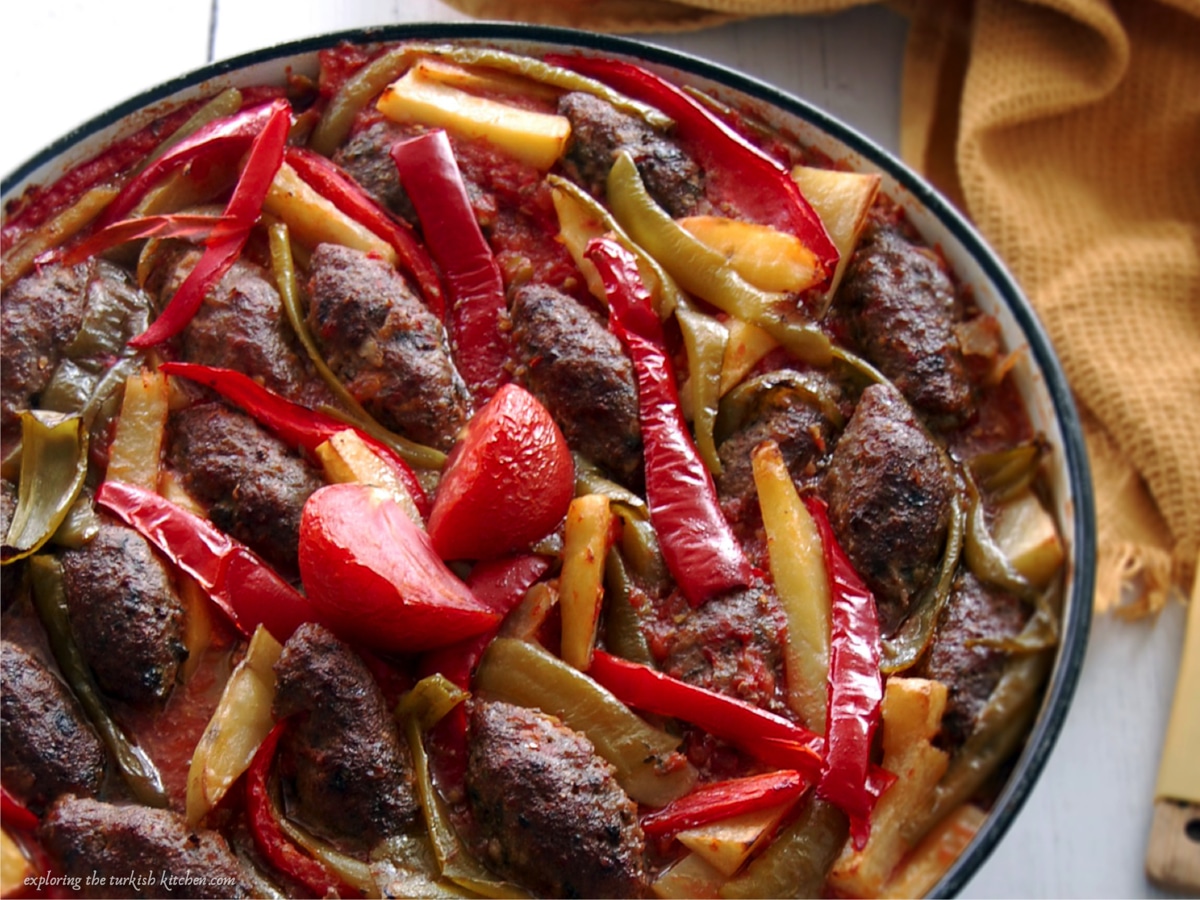
Ingredients
- 1 lb ground lamb
- 1/2 cup bulgur
- 1 onion, grated
- 1 tbsp mint, parsley, dill
- 1 tsp red pepper flakes
- Olive oil, lemon, and rice pilaf for serving
Instructions
- Mix lamb, bulgur, and herbs.
- Form into patties.
- Cook in olive oil over medium heat until browned outside and cooked through.
- Serve with rice pilaf and lemon wedges.
Signature ingredient: Turkish delight reflects how rose water elevates confections.
- Vietnam
Vietnamese cuisine balances five flavors - spicy, sour, sweet, salty, and savory. Fresh herbs add complexity to noodle soups and stir fries highlighting seafood and tropical fruits. Soy sauce and fish sauce add nuanced depths.
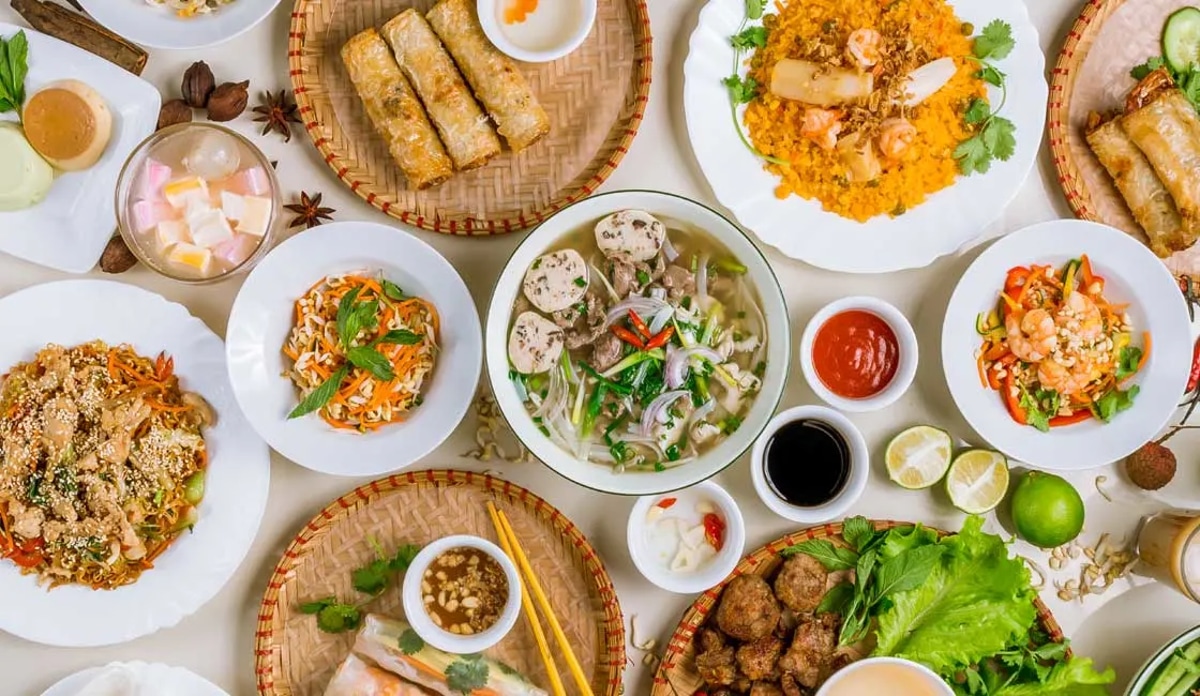
Specialties include pho noodles in fragrant beef broth, and bún salad bowls with rice noodles, herbs, and grilled meats. Spring Roll features rice paper rolls stuffed with shrimp, herbs, and noodles.
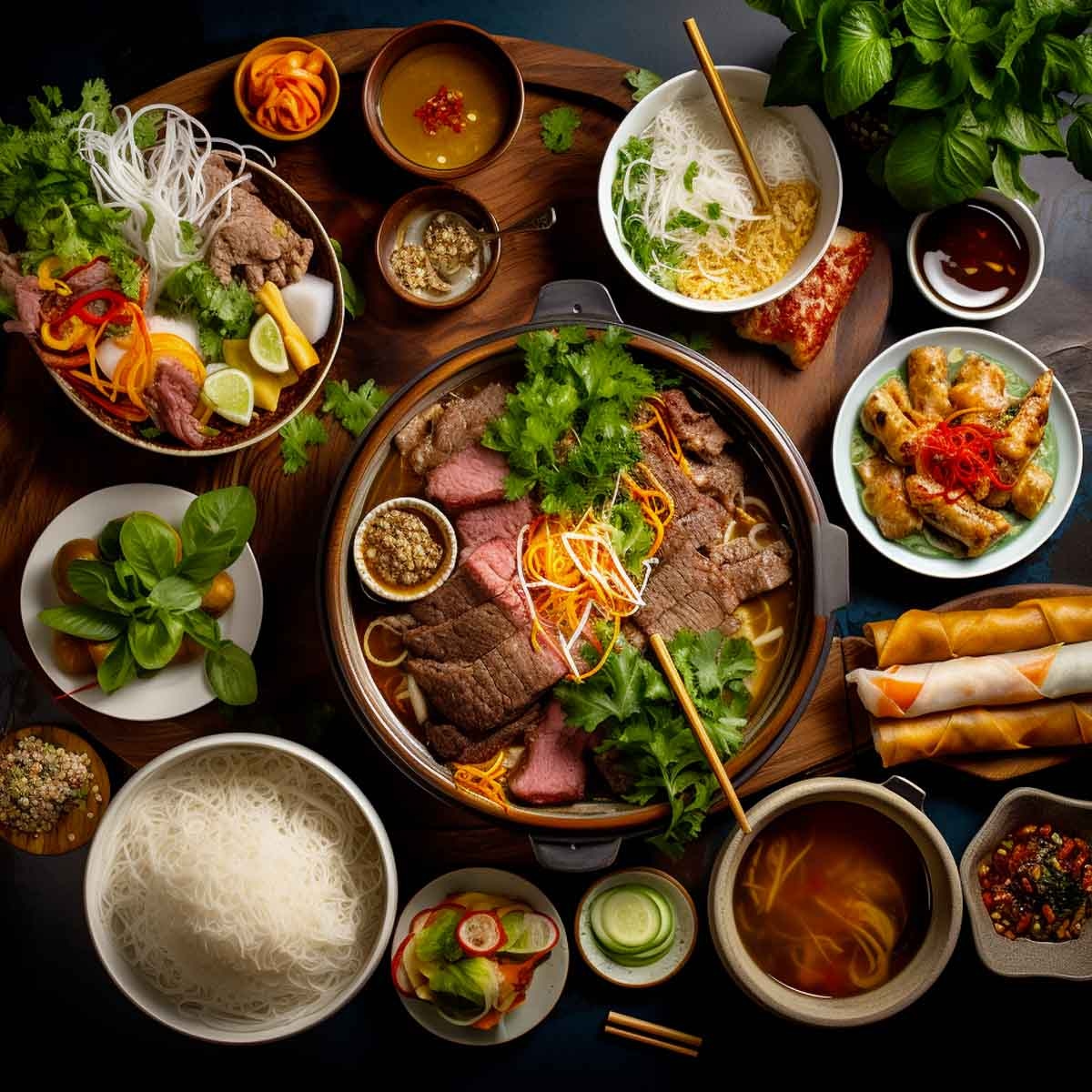
Recipe: Fry Spring Rolls
Fry spring rolls celebrate fresh textures and tastes. Shredded vegetables and noodles cocoon a filling of grilled pork belly, shrimp, and mushroom. The protein and vegetables are marinated in a mixture of fish sauce, lime juice, garlic, and black pepper to infuse intense savory flavor. Rice paper wrappers enclose the fillings before quick-frying to a light crispness.

Ingredients
- 8 rice paper rounds
- 8oz pork belly, shrimp, oyster mushrooms - julienned
- 1 carrot - julienned
- 1 zucchini - julienned
- 1 cup fresh herbs (mint, basil, cilantro) - chopped
- Marinade: 1/4 cup fish sauce, 1/4 cup lime juice, 4 cloves garlic - minced, 1 tsp black pepper
- Nuoc cham dipping sauce
Instructions
- Prepare fillings by julienning the pork belly, shrimp, mushrooms, carrot, and zucchini into thin matchstick strips.
- Combine marinade ingredients of fish sauce, lime juice, garlic, and black pepper in a bowl. Add the protein and vegetable strips and toss to coat evenly. Allow to marinate for 30 minutes.
- Set up an assembly line with the rice papers, filling ingredients, and a bowl of water.
- Working with one at a time, submerge a rice paper in the water until soft and pliable, about 30 seconds.
- Lay the softened rice paper on a flat surface and add a row of filling ingredients in the center.
- Fold the bottom of the wrapper up over the filling, then fold in the sides and roll tightly but gently to fully enclose.
- Heat oil in a pan and carefully add the spring rolls. Fry for 2-3 minutes per side until browned and crisp.
- Drain on a paper towel and serve immediately with nuoc cham dipping sauce.
Signature ingredient: Fish sauce adds complexity and highlights Vietnam's coastal cuisine.
- Brazil
Brazilian cuisine melds Portuguese traditions with indigenous Tupi and African influences, creating a vibrant melting pot. Coastal seafood like shellfish bisques and moqueca fish stews highlight Brazil's long coastline. Hearty feijoada stew combines beans with smoked pork and sausages.
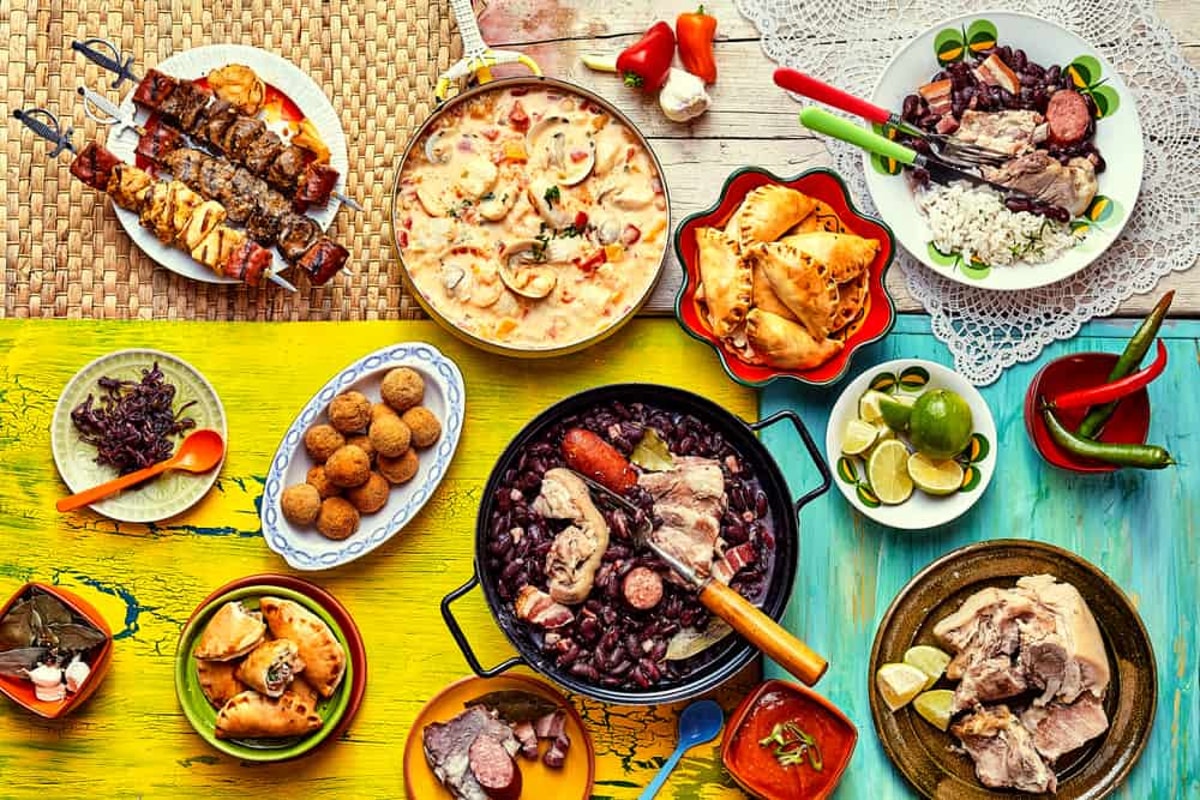
Tropical fruits infuse drinks and desserts, from caipirinha cocktails with lime and cachaça to refreshing licuados fruit blends. Coconut features in brigadeiros fudgelike balls and cocada sweet made from its shredded flesh. Coffee drinking is integral to daily life as the world's top producer, served strong and sweet.
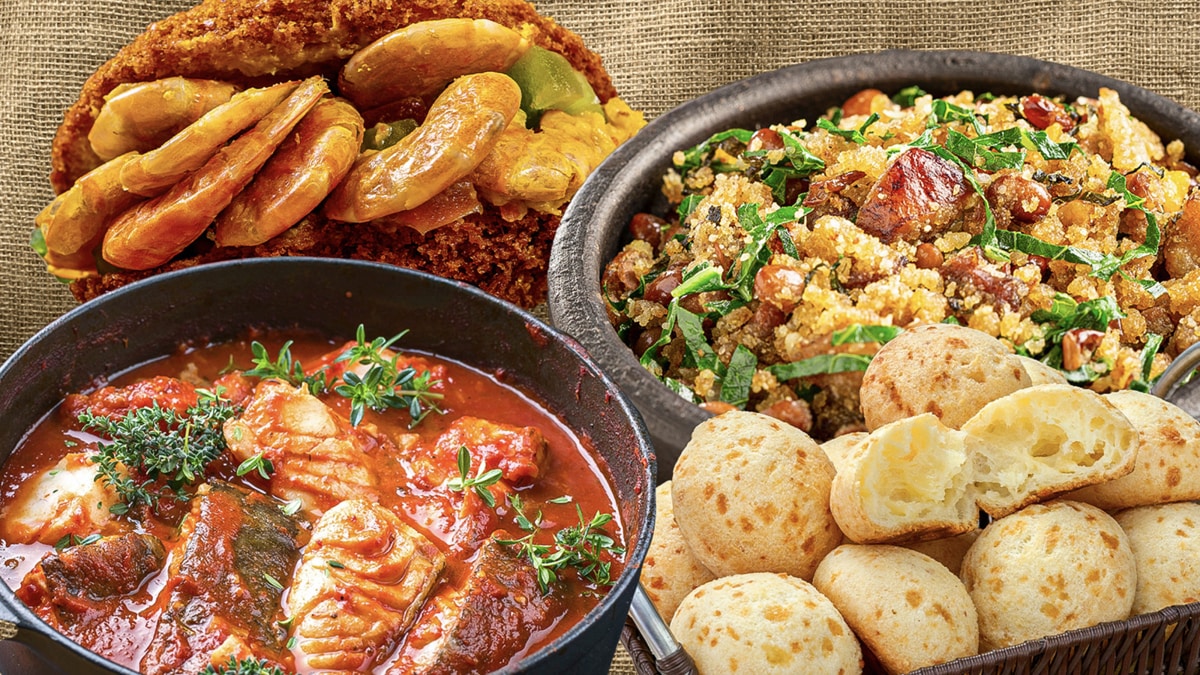
Recipe: Feijoada (Brazilian Black Bean Stew)
Feijoada completa saturday lunch favorite. Black beans and smoked meats like pork shoulder and sausages simmer with herbs and orange zest. Served with rice, farofa manioc flour, and kale cabbage salad, each component contributes substance and texture. Feijoada is satisfied with its depth while remaining light. Bread sopping its rich broth completes the meal.
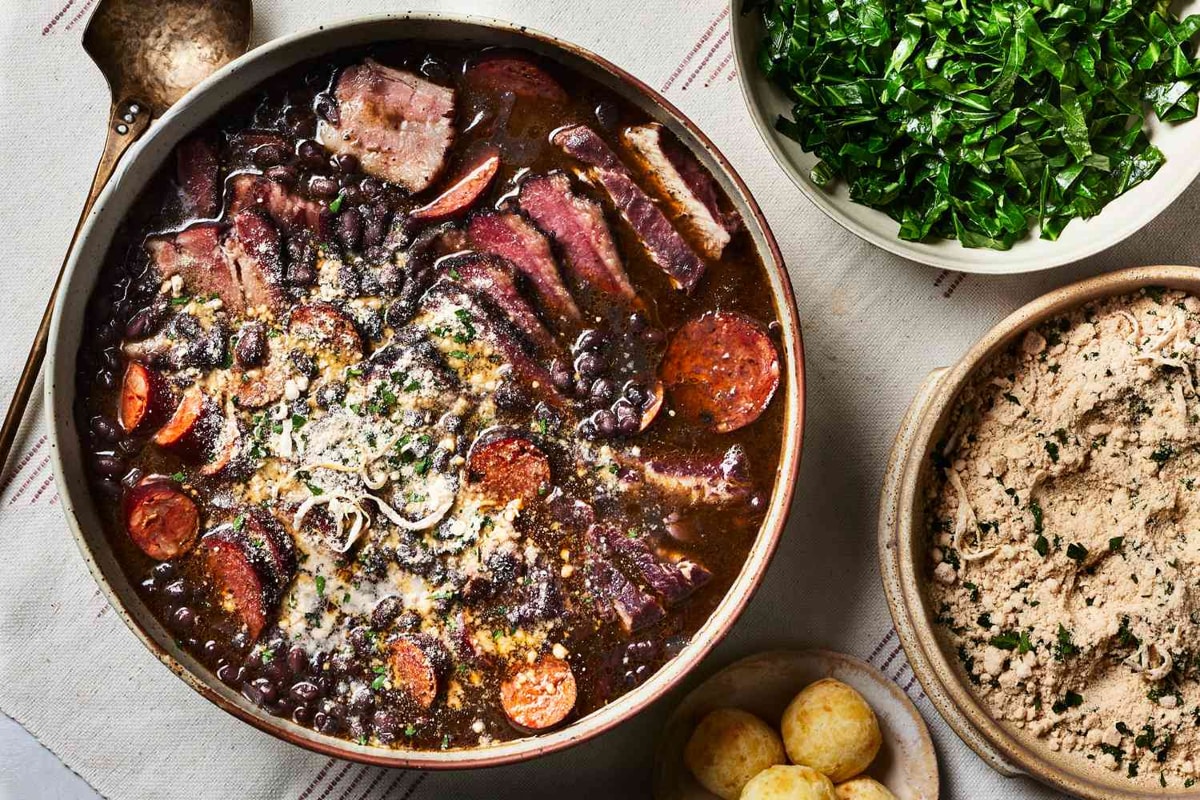
Ingredients
- 1 lb dried black beans
- 1 lb pork shoulder, sliced
- 8 oz linguiça or other sausage links
- 1 onion, diced
- 3 cloves garlic, minced
- 1 bay leaf, salt, black pepper
- Optional garnishes: rice, farofa, kale salad
Instructions
- Soak beans overnight.
- Simmer beans and meats in water until tender, 2-3 hours.
- Add onion and garlic during the last 30 minutes.
- Season.
- Serve in bowls with rice and other garnishes.
- Sop bread in stew juices.
Signature ingredient: The heart of Brazilian cooking lies in black beans and their ability to absorb flavors over long simmering.
- Peru
Peruvian cuisine beautifully marries indigenous American traditions with vibrant Spanish and African influences. Along its vast coastline, ceviches highlight raw fish or shellfish marinated in citrus juices. Canchas popped corn complements with salty crunch.
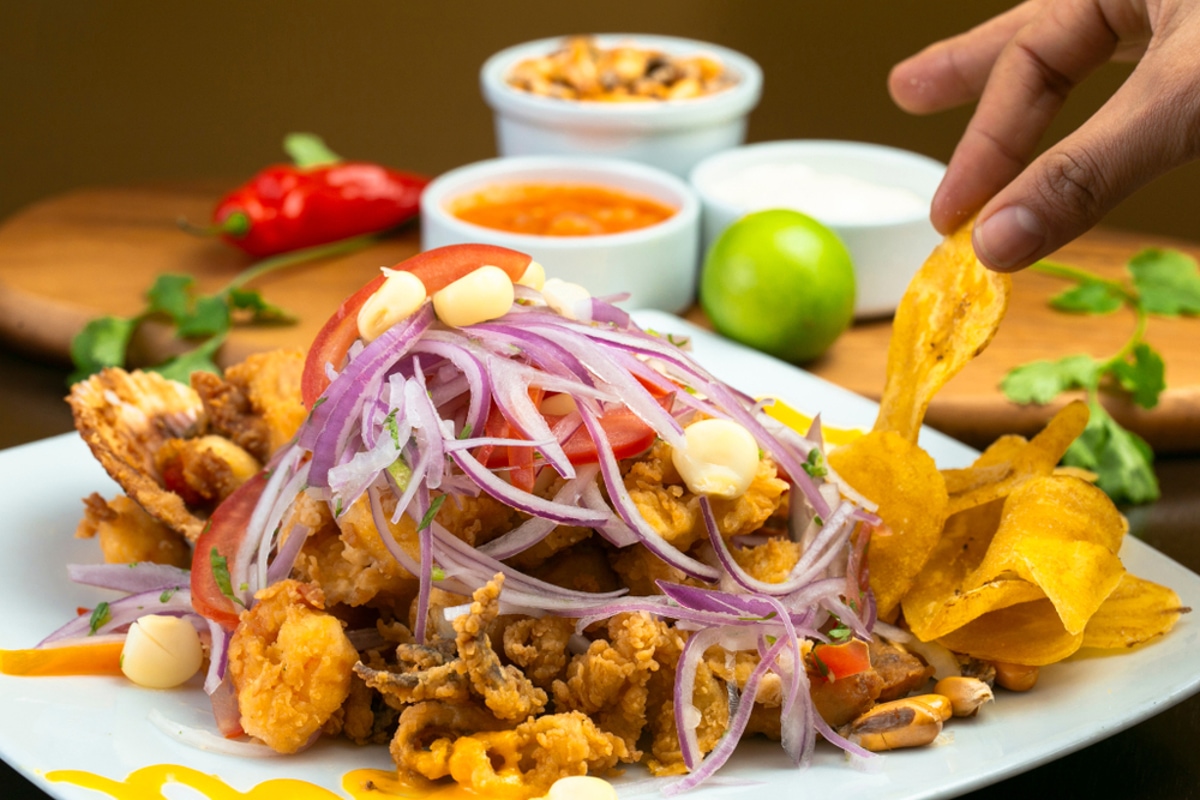
High in the Andes, quinoa, and kion corn form the starchy base for hearty soups and stews. Cuy (guinea pig) remains an unfussy specialty while alpaca appears on finer menus. Potato soups comfort with minimal ingredients maximized.
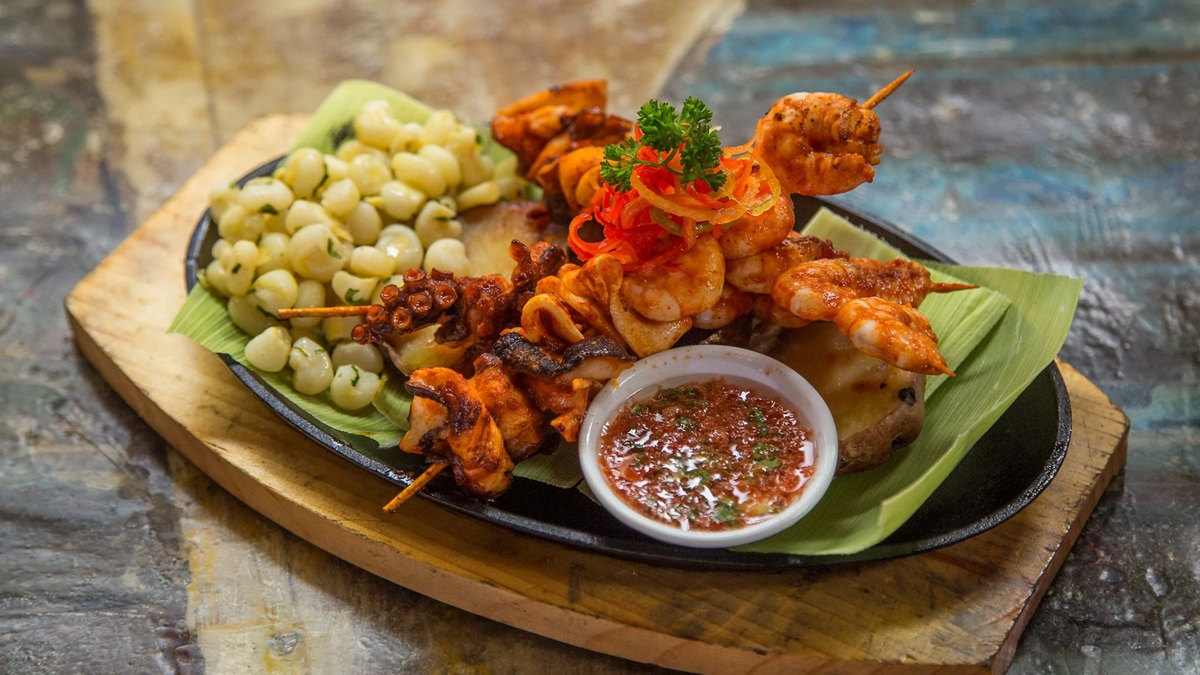
Recipe: Anticuchos
Anticuchos grill small cuts of beef heart skewers basted in chili, garlic, and vinegar sauce. Their smoky, tangy flavor profile epitomizes Peruvian snacking. Street vendors on busy corners sell these along with tripe and chicken skewers, perfect for sharing with a cold beer or Inca Kola.
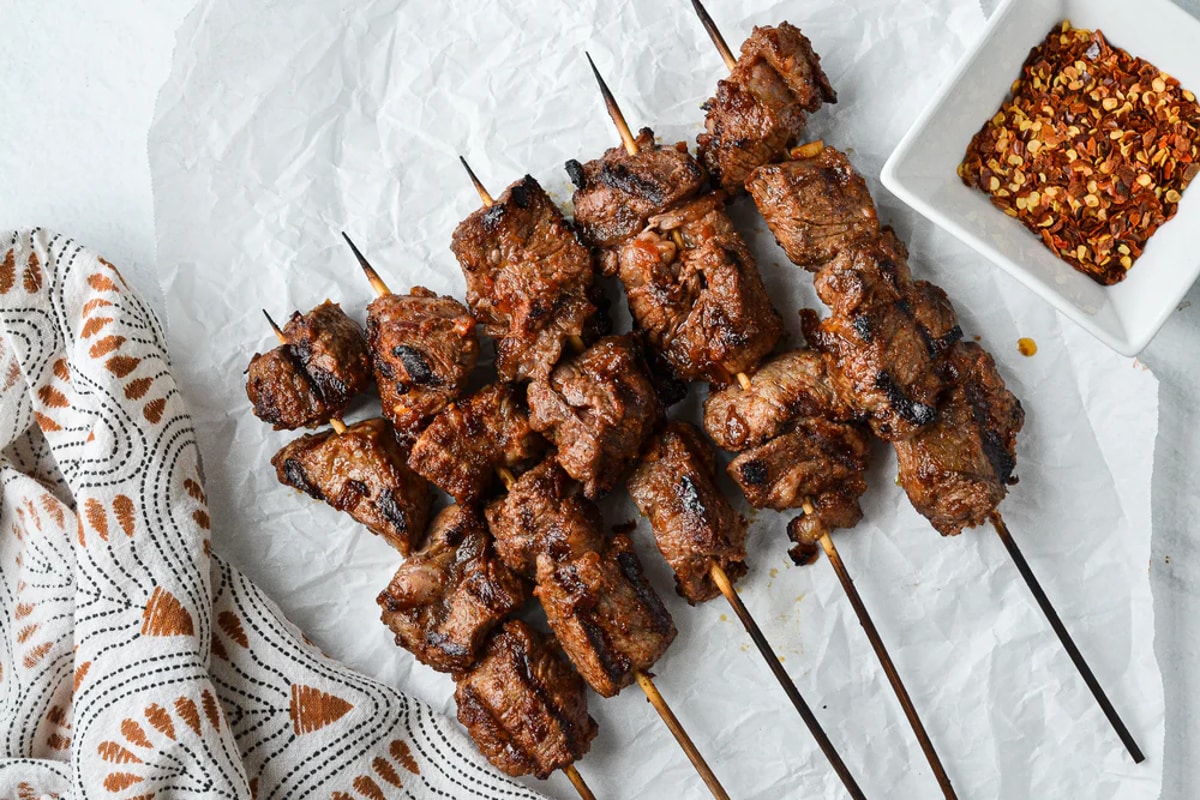
Ingredients
- 1 lb beef heart, cut into 1" cubes
- 1/4 cup red wine vinegar
- 3 garlic cloves, minced
- 1 tsp dried oregano
- 1/4 cup aji panca paste (or other chili paste)
- Salt, skewers, olive oil
Instructions
- Marinate beef in vinegar-garlic-oregano for 30 mins.
- Thread onto skewers.
- Grill or broil, basting with marinade.
- Brush with aji paste last 2 mins.
- Serve with sliced onions.
Signature ingredient: Chili pastes lend liveliness to dishes across regions.
- Ethiopia
Ethiopian cuisine reflects its position at the crossroads of Africa and the Middle East. Injera fermented teff pancakes form the base to scoop countless stews and salads. Wats combines legumes like lentils with meat, greens, and a vibrant berbere spice blend.
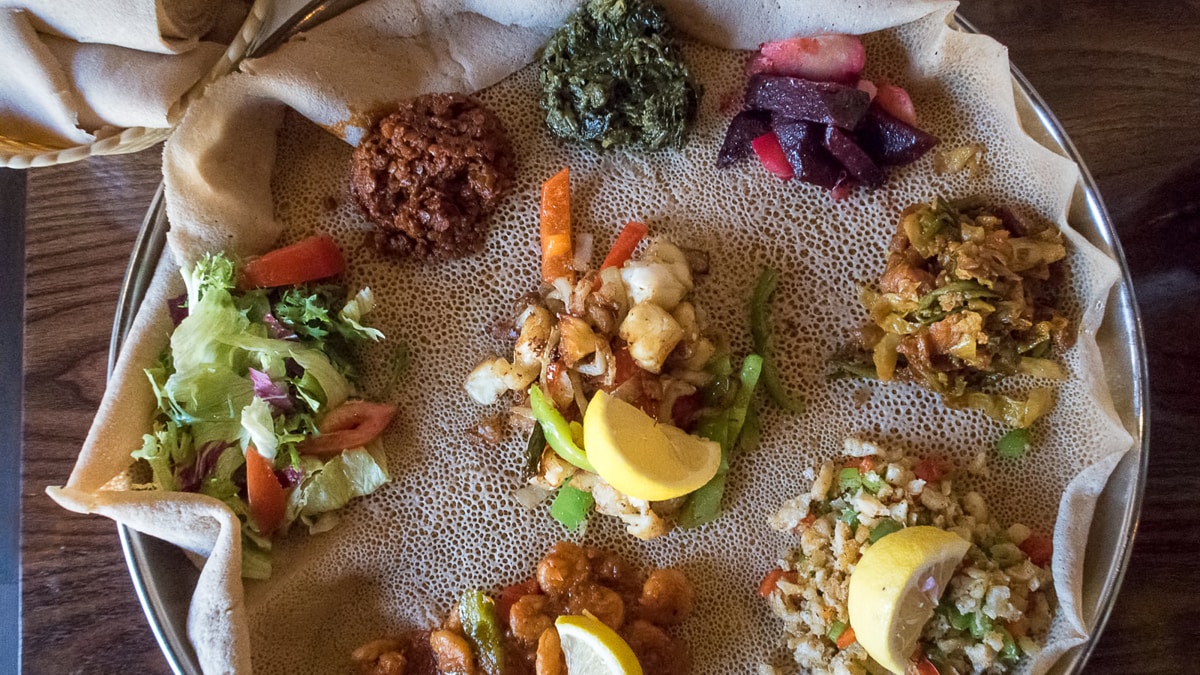
Raising dairy animals inspires dishes like maybe butter made from cow's milk. Honey wine or tej accompanies meals along with the traditional coffee ceremony. Green coffee beans roasted and then brewed strong with spices capture the daily ritual.
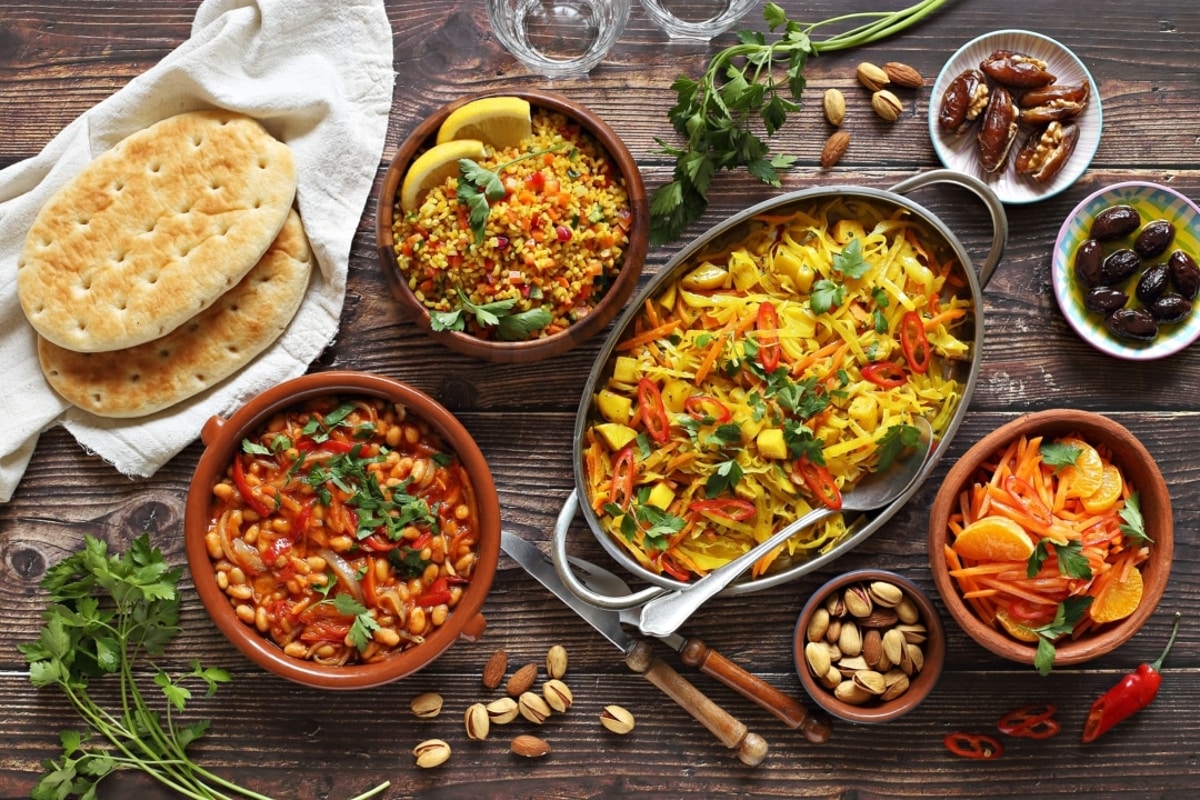
Recipe: Doro Wat (Spicy Chicken Stew)
Doro wat celebrates chicken. Bone-in pieces simmer with onion, berbere, niter kerem ginger, and kibbeh spice mixture into a rich gravy. Served on injera, its intoxicating blend of warm spices and savory depths satisfies body and soul. In shared communal style, doro wat brings people together.
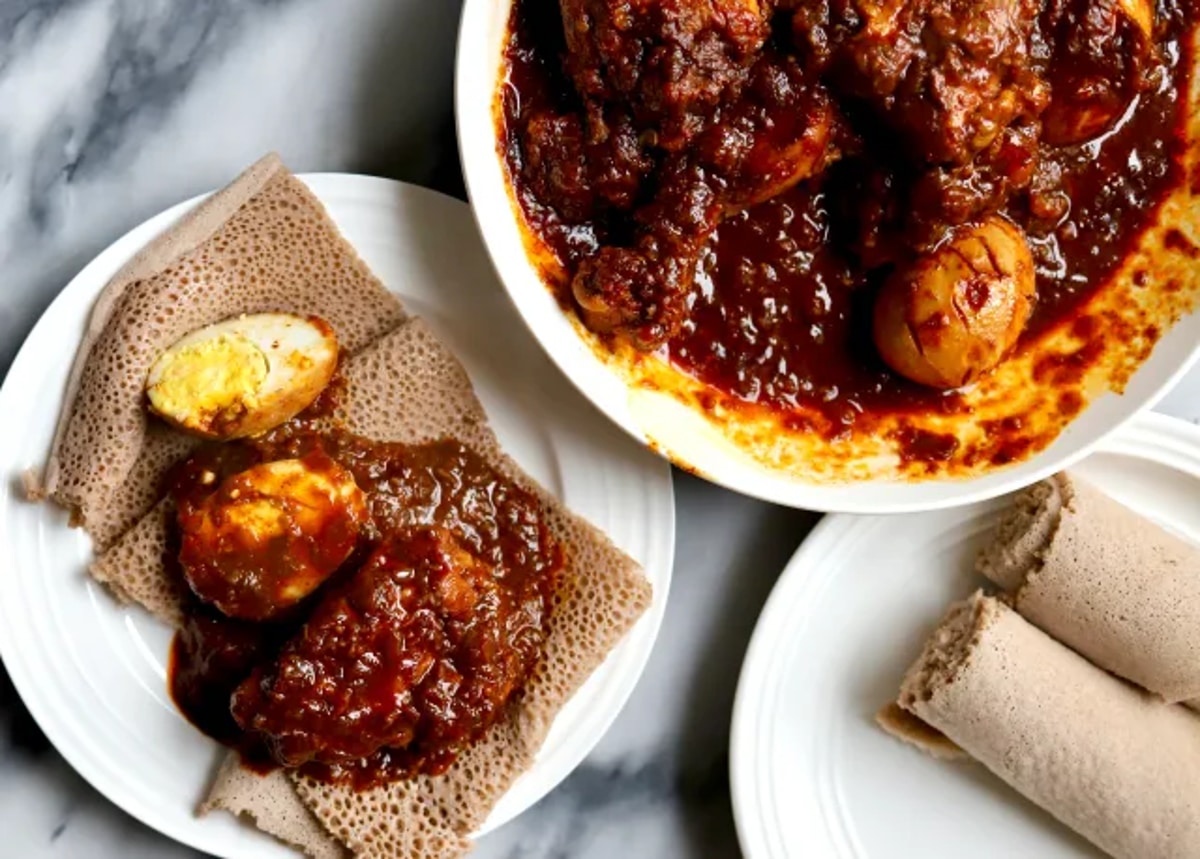
Ingredients
- 2 lbs chicken pieces
- 1 onion, diced
- 3 cloves garlic, minced
- 1 tbsp berbere spice mix
- 1 cup tomatoes
- Oil, niter kerem, kibbeh spices
- Injera for serving
Instructions
- Sauté chicken and onion in oil until browned.
- Add spices and tomatoes, simmer until chicken is tender, about 1 hour.
- Serve on injera to scoop up each bite.
Signature ingredient: Berbere spice blend defines Ethiopia with its warmth from chili and aromatics.
- Argentina
Argentina combines European traditions with influences from indigenous cuisines. Gauchos herding cattle on the Pampas-inspired asado barbecue preparing meat over open flames. Tender steaks like bife de chorizo ribeye reign alongside criollo sausage and choripán sausage sandwiches.
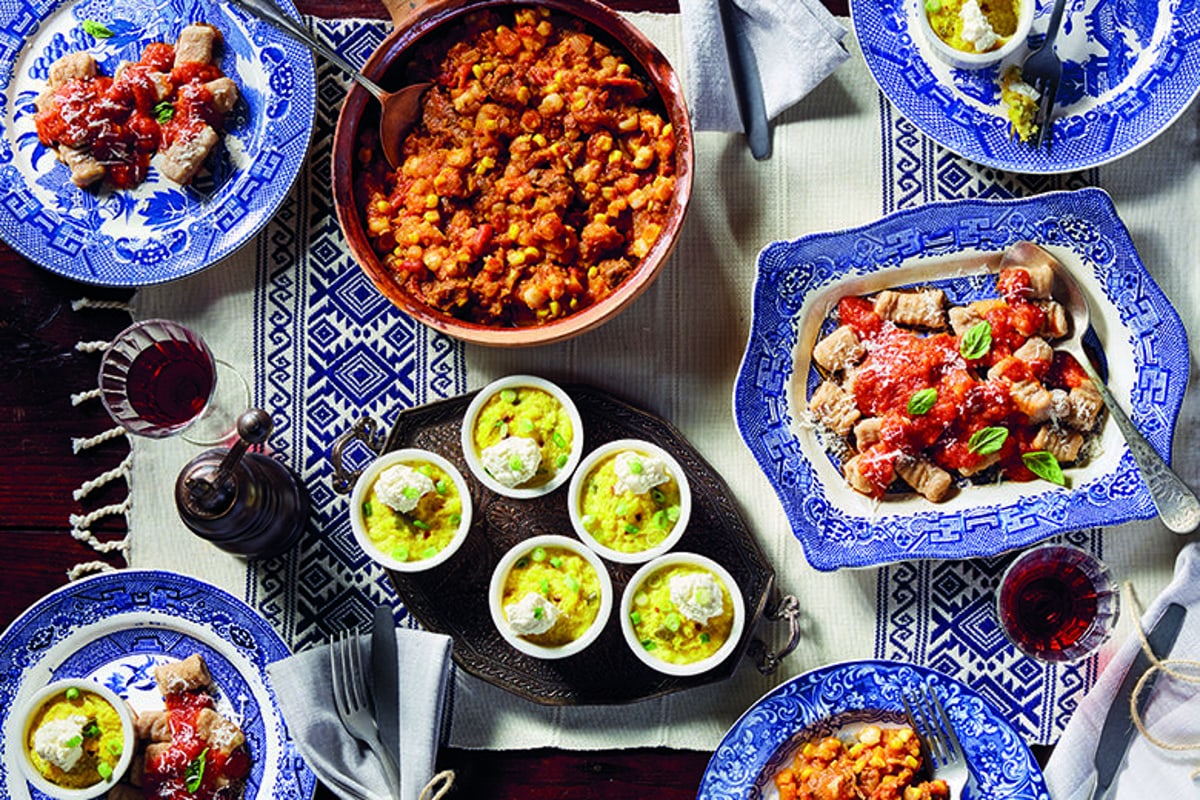
In the fertile Mesopotamia region, yerba mate herb infusion lifts daily activities. Dulce de leche caramel spread complements alfajores cookie sandwiches. Italian influences emerged in pasta and pizza, as immigrant communities thrived in the early 20th century.
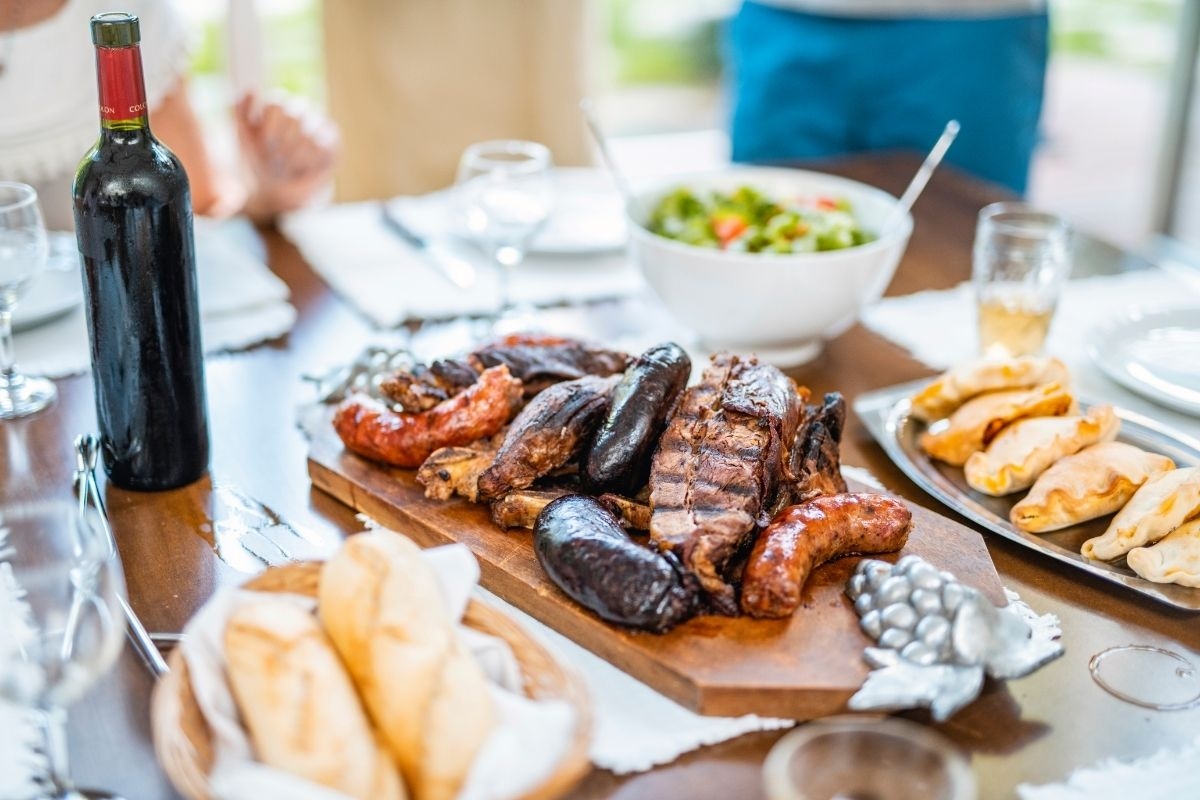
Recipe: Beef Empanadas
Empanadas showcase Argentina's melding of cultures. Meat or vegetable fillings encased in dough derived from Spain yet are adaptable to local flavors. Fried or baked, empanadas make convenient snacks on the go or as appetizers. Versions range from regional to gourmet, reflecting Argentina's vibrant culinary identity.

Ingredients
- 1 lb ground beef
- 1 onion, diced
- 2 cloves garlic, minced
- 1 tbsp olive oil
- Salt, pepper, empanada dough
Instructions
- In a skillet, cook beef and onion until browned.
- Add garlic last minute.
- Cool, then fill dough rounds.
- Fry or bake until golden.
- Serve with chimichurri or greens for a classic Argentine hand pie.
Signature ingredient: Asado barbecue shows how gauchos transformed cuts of meat over open fire into cultural staples.
- Lebanon
Lebanese cuisine mirrors the country's role as a historic crossroads. Mezze shareable appetizers showcase selections of dips, salads, and pastries. Baba ghanoush and hummus pair with grape leaves and kibbeh bulgur patties.
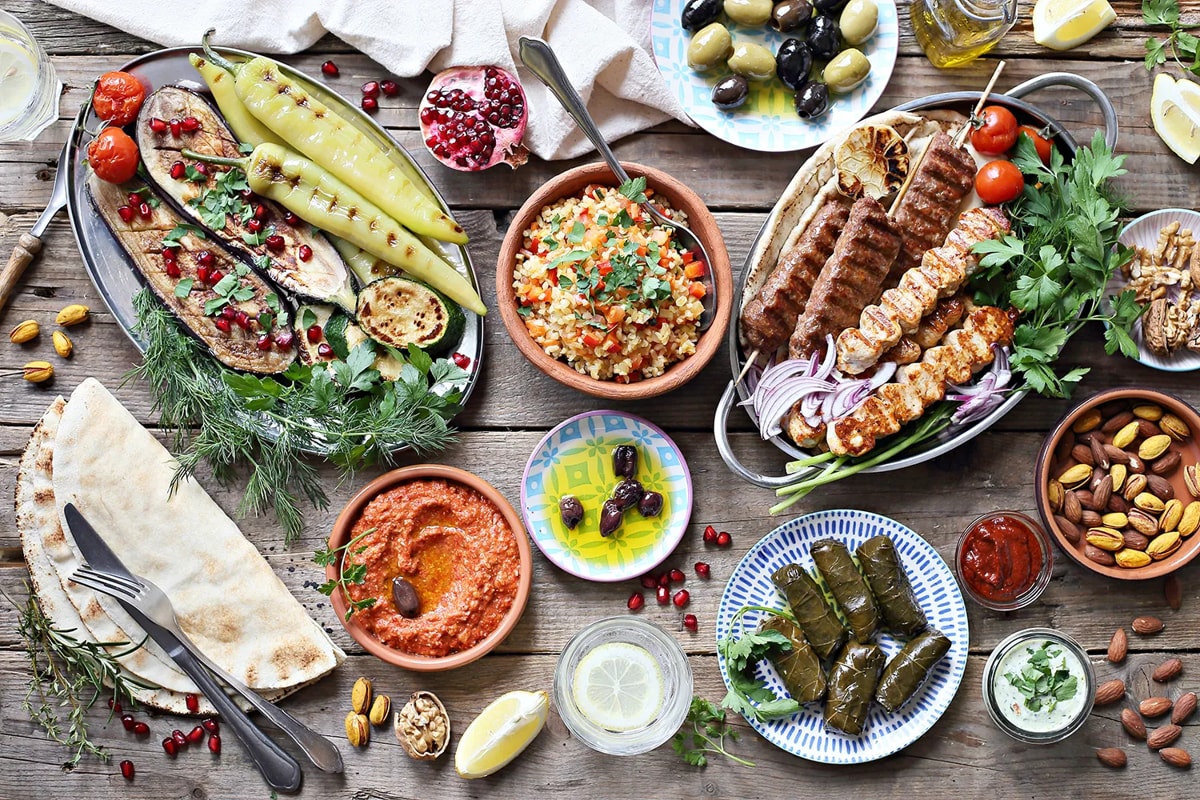
Kebabs like shish taouk charcoal-grilled chicken and lahm mashwi beef tenderize overnight in garlic and spices. Rice pilafs absorb flavors while za'atar herb blend adds aroma. Bakeries prepare manakish flatbreads with za'atar or cheese.
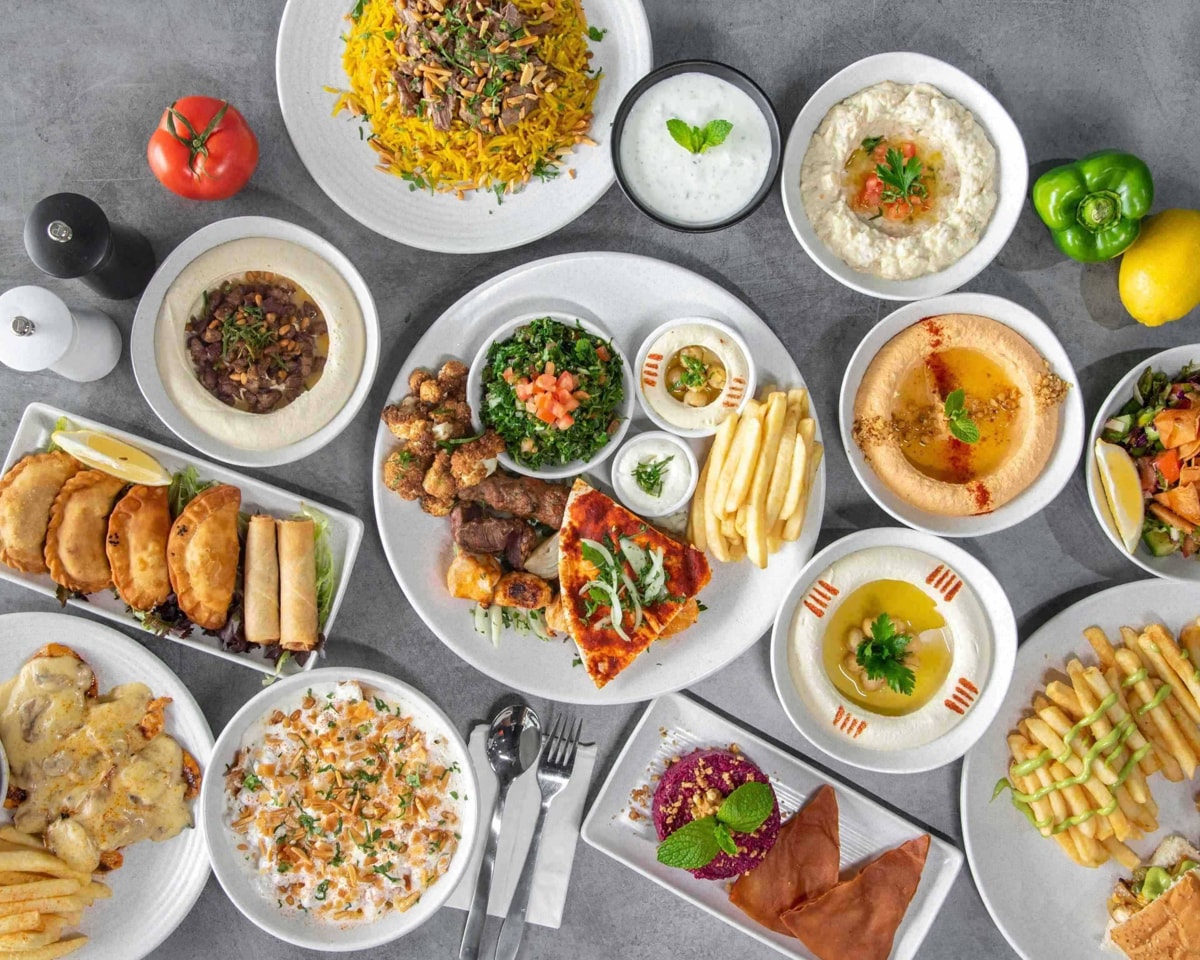
Recipe: Kousa Mahshi (Stuffed Zucchini)
Kousa Mahshi stuffed zucchini boats are satisfied with their balance of textures and flavors. Vegetables act as vessels for savory rice and meat mixtures, baked until tender. Served at room temperature, their composure conveys Lebanese restraint and refinement.
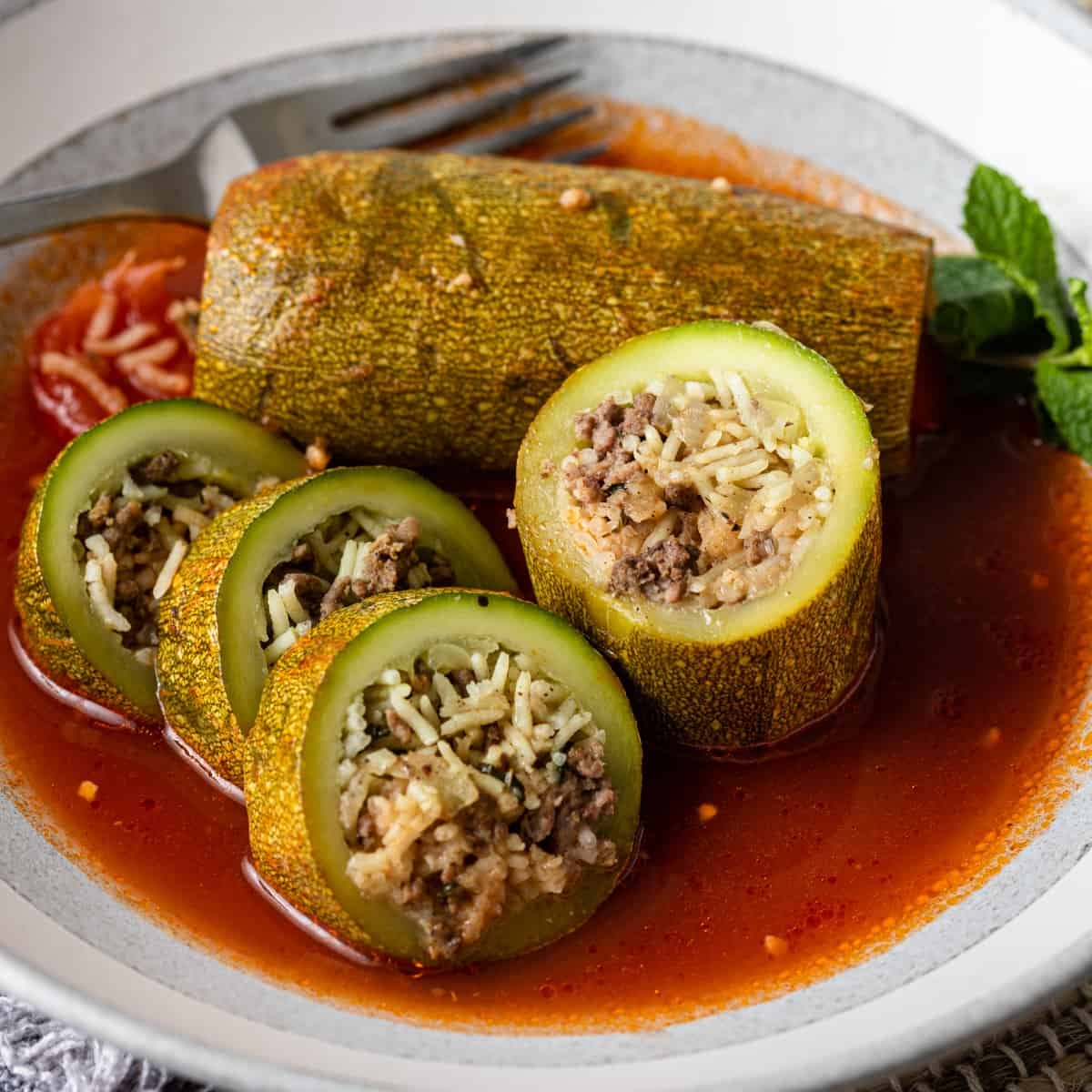
Ingredients
- 4 medium zucchini
- 1 cup rice
- 1/2 lb ground beef or lamb
- 1 onion, diced
- 2 tbsp pomegranate molasses
- Salt, pepper, cinnamon
Instructions
- Hollow out zucchini and dice removed flesh.
- In a skillet, cook rice, meat, and onion until browned.
- Add zucchini flesh and seasonings.
- Stuff mixture into zucchini boats and place in baking dish.
- Bake at 350°F until tender, about 30 mins.
- Enjoy warm or at room temperature.
Signature ingredient: Za'atar mixes sumac, thyme, and sesame for one of Lebanon's most identifying flavors.
- Korea
The cuisine of Korea places emphasis on balance, simplicity, and nutrition. Meals showcase ingredients indigenous to the Korean peninsula and nearby regions, prepared to complement white rice.
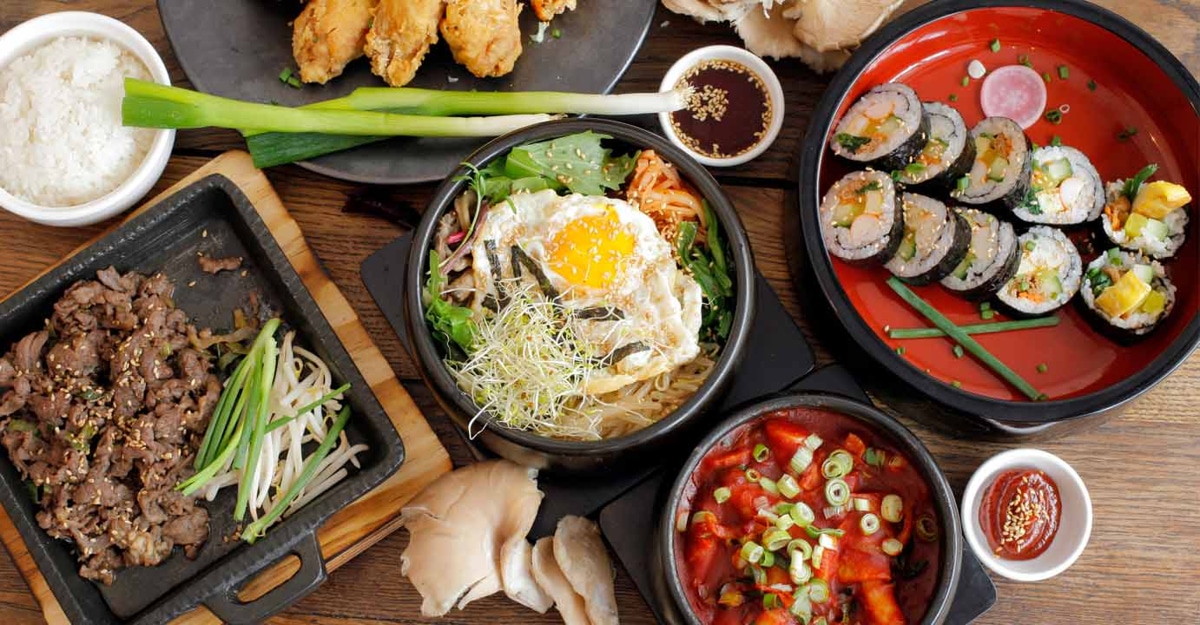
Kimchi, the fermented napa cabbage trademark of Korean cooking, adds a distinctive tang. Versatile gochujang chili paste provides heat and richness. Soups like kimchi-jjigae simmer kimchi with additions like tofu, pork, or seafood.
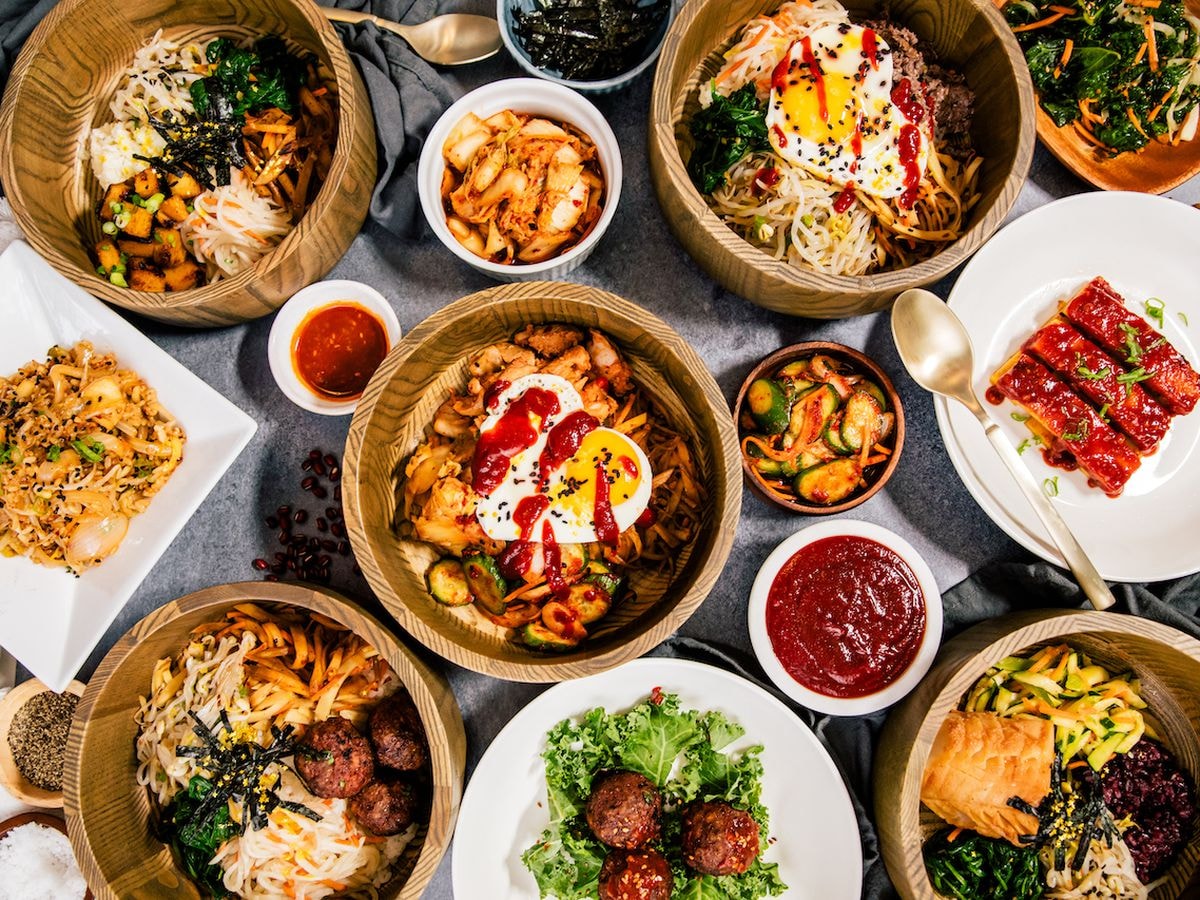
Recipe: Bibimbap
Bibimbap is a nourishing one-bowl meal where cooked rice forms the base. Assorted natural vegetables such as mushrooms, spinach, and julienned carrots are arranged artistically atop. Strips of beef are stir-fried and then added. At the table, gochujang is mixed in to bring the elements into harmony. Each ingredient stands out while their blend nourishes body and soul through Korean culinary wisdom and nature's gifts.
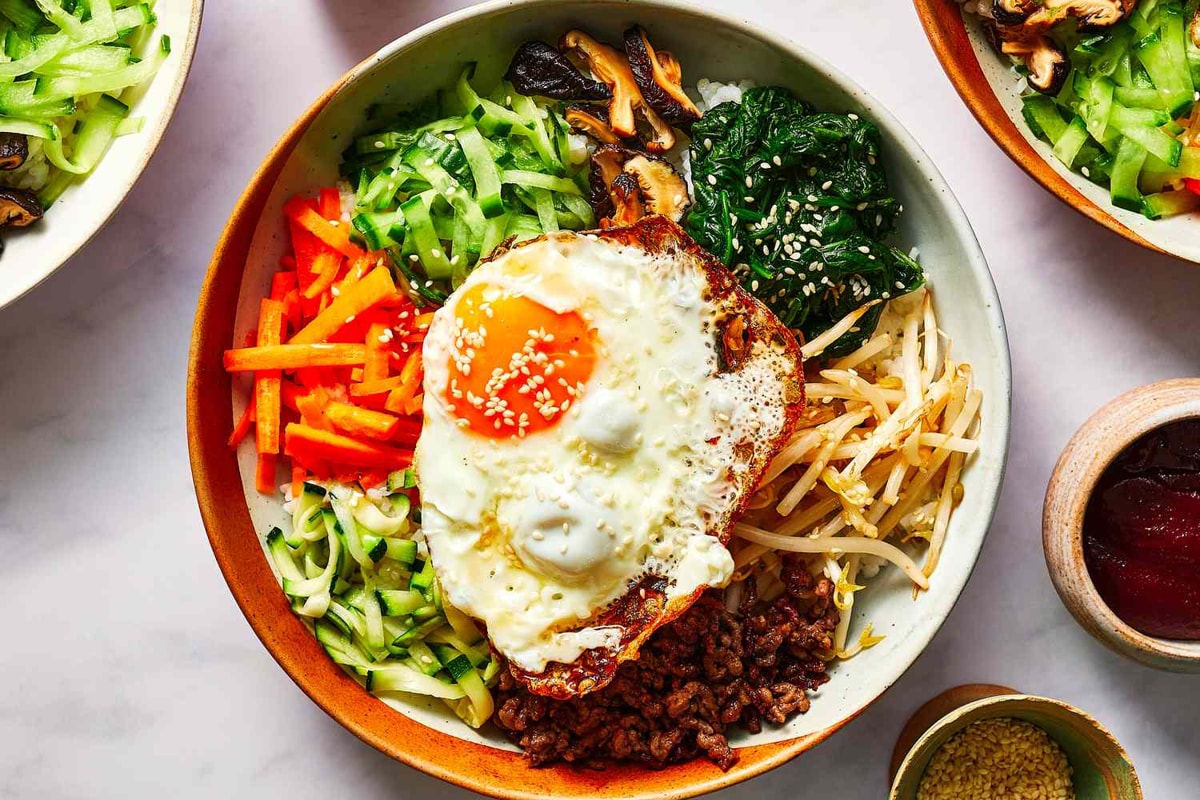
Ingredients
- Short-grain white rice
- Button mushrooms, spinach, carrots - julienned
- Thinly sliced beef
- Gochujang chili paste
- Sesame oil, low-sodium soy sauce
Instructions
- Prepare rice according to the package.
- In a skillet, stir fry beef strips until just cooked through.
- Separately, blanch or sauté each namul.
- To serve, place cooked rice in a warm stone bowl and artfully arrange namul and beef. Finish with gochujang, sesame oil, and soy sauce drizzled over top.
- Enjoy mixing the ingredients together before eating each intentional bite.
- Germany
German cuisine has evolved from rustic peasant fare to sophisticated modern cooking over centuries at the crossroads of Europe. Hearty schnitzels, sausages like bratwurst, and potato salads reflect the hearty cold climate cuisine.
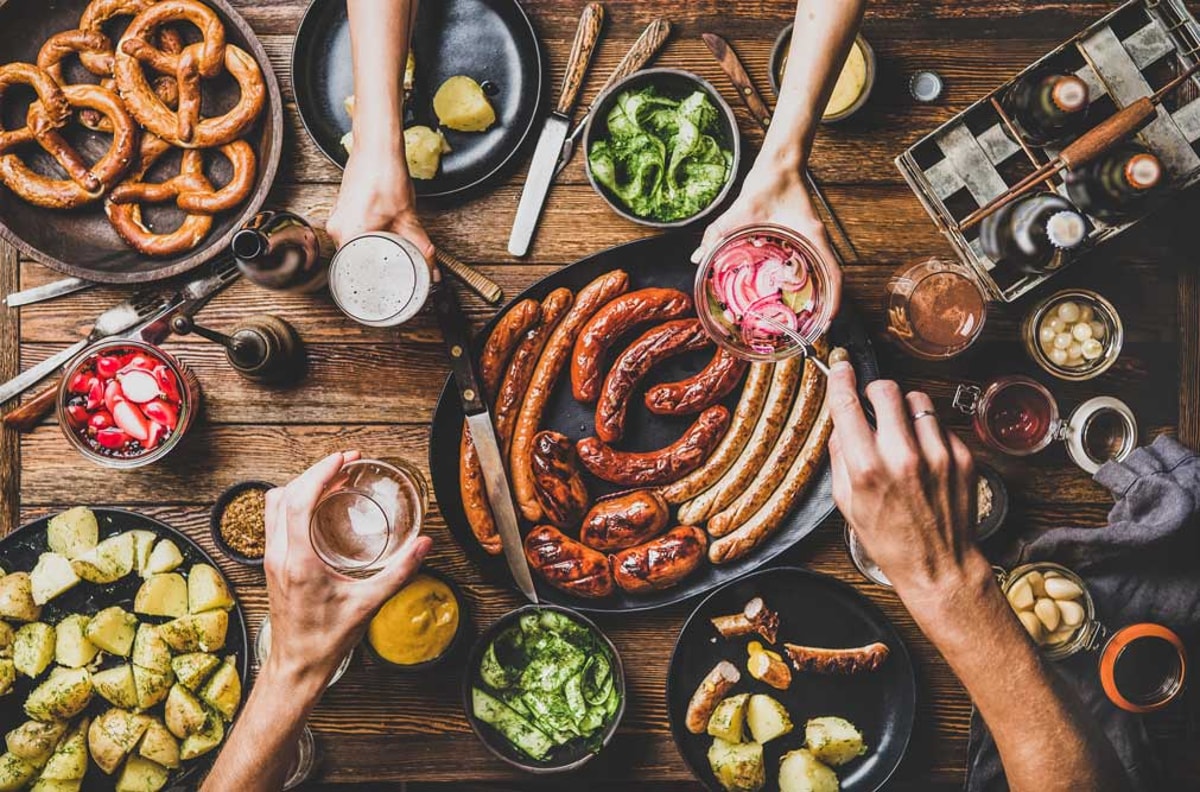
Bread from the starch base, from rye vollkornbrot to pretzels perfect with beer. Cuisine varies regionally yet cookery staples remain. Swabians stir fry spätzle egg noodles while bavarians favor weisswurst veal sausages with sweet mustard.
Recipe: Kasespätzle
Kasespätzle exemplifies Swabian home cooking. Eggy noodles enriched with ricotta or quark cheese combine traditions elevating simple ingredients. Fried until golden brown, kasespätzle gains complexity contrasting textures of crisp exterior and soft interior. Enjoyed as a comforting family meal or festive dumpling, kasespätzle satisfies body and soul.
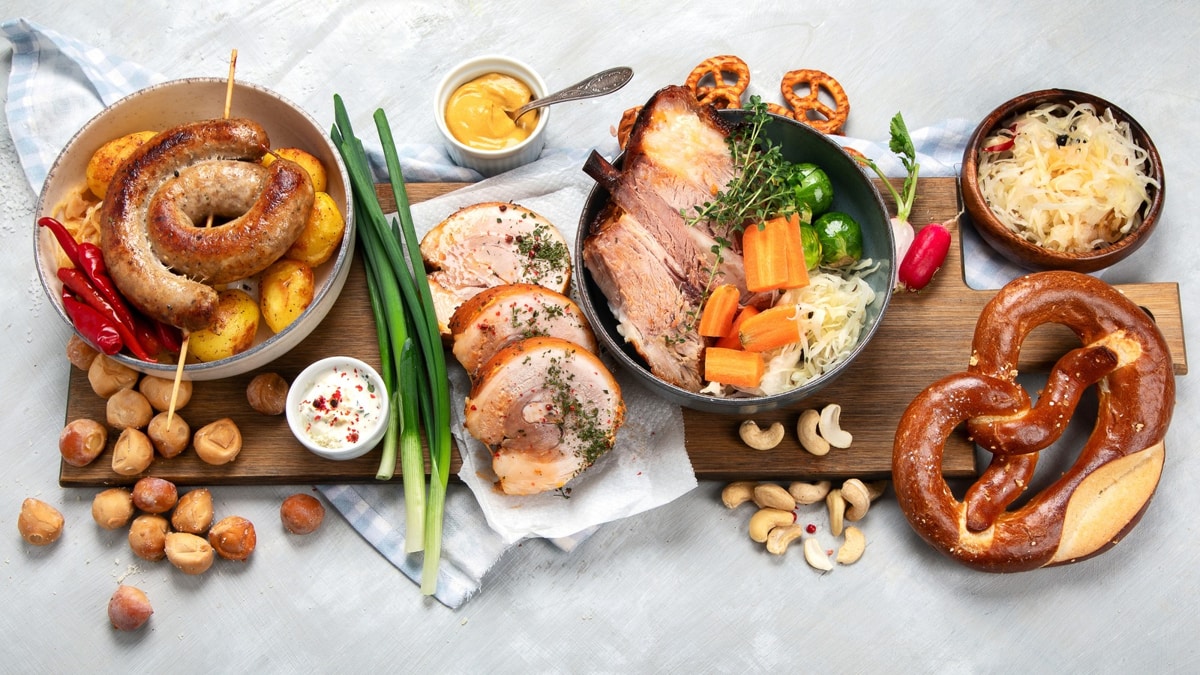
Ingredients
- 2 cups all-purpose flour
- 1 cup ricotta or quark cheese
- 1/2 cup milk
- 2 eggs
- 1/4 tsp nutmeg
- Salt, butter, parsley
Instructions
- Combine dry ingredients. Beat in wet.
- Push through spätzle maker into boiling salted water.
- Fry in butter until crisp.
- Season and serve hot, garnished with parsley.
- Enjoy as a hearty side.
Signature ingredient: Bread diversity shows Germany's culinary identity from region to region.
- United Kingdom
The cuisine of Britain has long absorbed global influences, from colonial trade routes to modern multiculturalism. Dishes showcase seasonal local fare, from earthy game stews to summer garden salads.
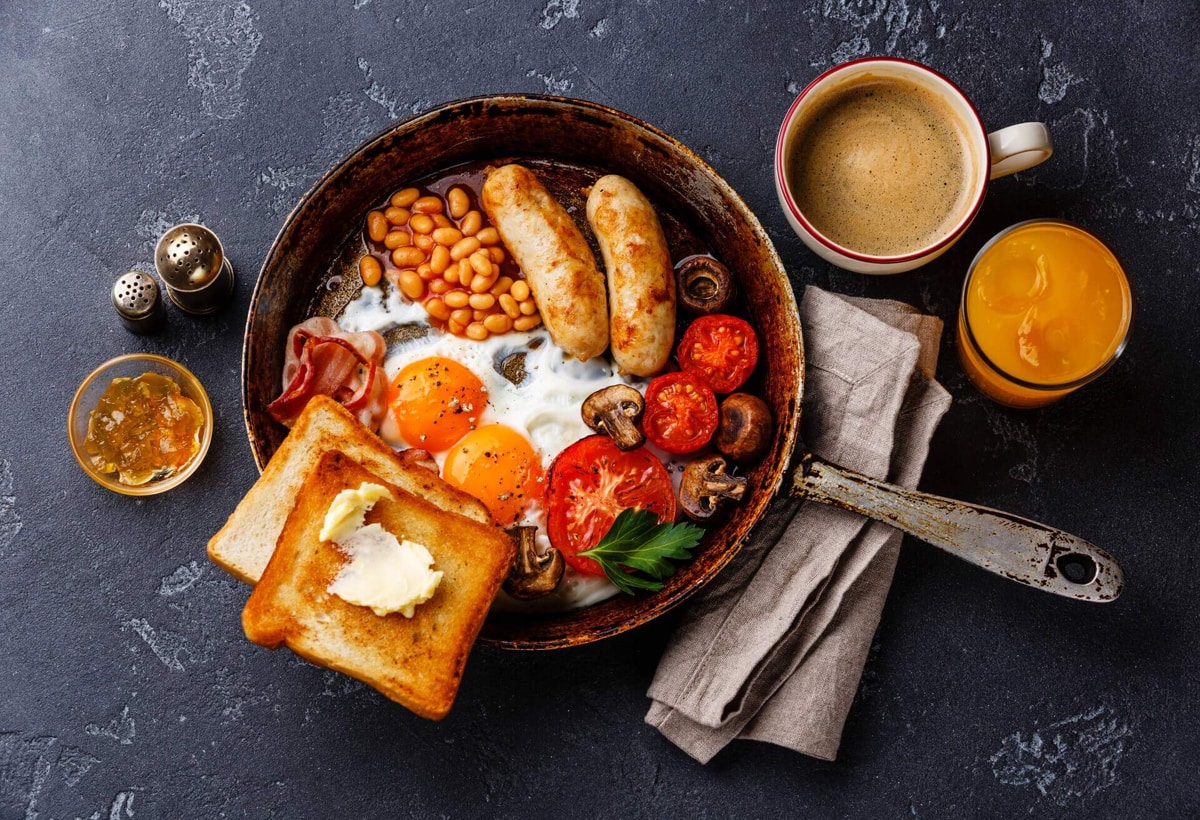
Afternoon tea spreads satisfy with bread like Welsh rarebit, scones, and biscuits. Sunday roasts feature roasted meats like beef or lamb with Yorkshire pudding and roasted vegetables from red onions to rosemary potatoes.

Recipe: Fish and Chips
Fish and chips emerge as one of Britain’s most iconic dishes, with British staples like cod, haddock, or plaice battered and fried to crisp perfection. Enjoyed as a takeaway or at the chippy, salty chips provide the perfect conduit for malt vinegar. A comforting dish, fish and chips nourish both body and soul.

Ingredients
- Cod or haddock fillets
- Vegetable oil for frying
- Plain flour
- Salt, malt vinegar
- Potatoes cut into chips
Instructions
- Soak chips in water for 30 minutes, then fry until crisp and golden.
- Make a batter of flour, water, and salt.
- Coat fish in batter and fry until the outer coating is crisp.
- Enjoy with chips, malt vinegar, and tartar sauce.
Signature ingredient: Unique dishes like Welsh rarebit show how Britain adopted and adapted cuisines from around the world.
Conclusion
This journey around the world showed both similarities and differences in cuisines. While recipes vary, food everywhere nourishes people and culture. Staple grains, balanced flavors, and sharing meals bond communities.
Special dishes represent each place's history. Ethiopia's injera, Morocco's tagines, and Britain's fish and chips tell stories through taste. Cooking changed over time due to land, trade, and cultural sharing.
Food also brings people together across borders. Trying new flavors fosters understanding. Eating together builds connections. These glimpses show how food distinguishes and unites through the earth's flavors. May this spark interest to learn more about diverse cooking traditions?
Popular Articles
You’ll Also Love

19+ Christmas Jelly Slice Recipe Unleash Your Inner Chef!

18+ Cute Christmas Cookies Recipe Taste The Magic Today!

19+ Mini Chocolate Christmas Cake Recipe Discover Culinary Perfection!

16+ Flour Salt Christmas Ornament Recipe Unlock Flavor Sensations!

15+ Pillsbury Holiday Sugar Cookies Recipe Elevate Your Taste Buds!
